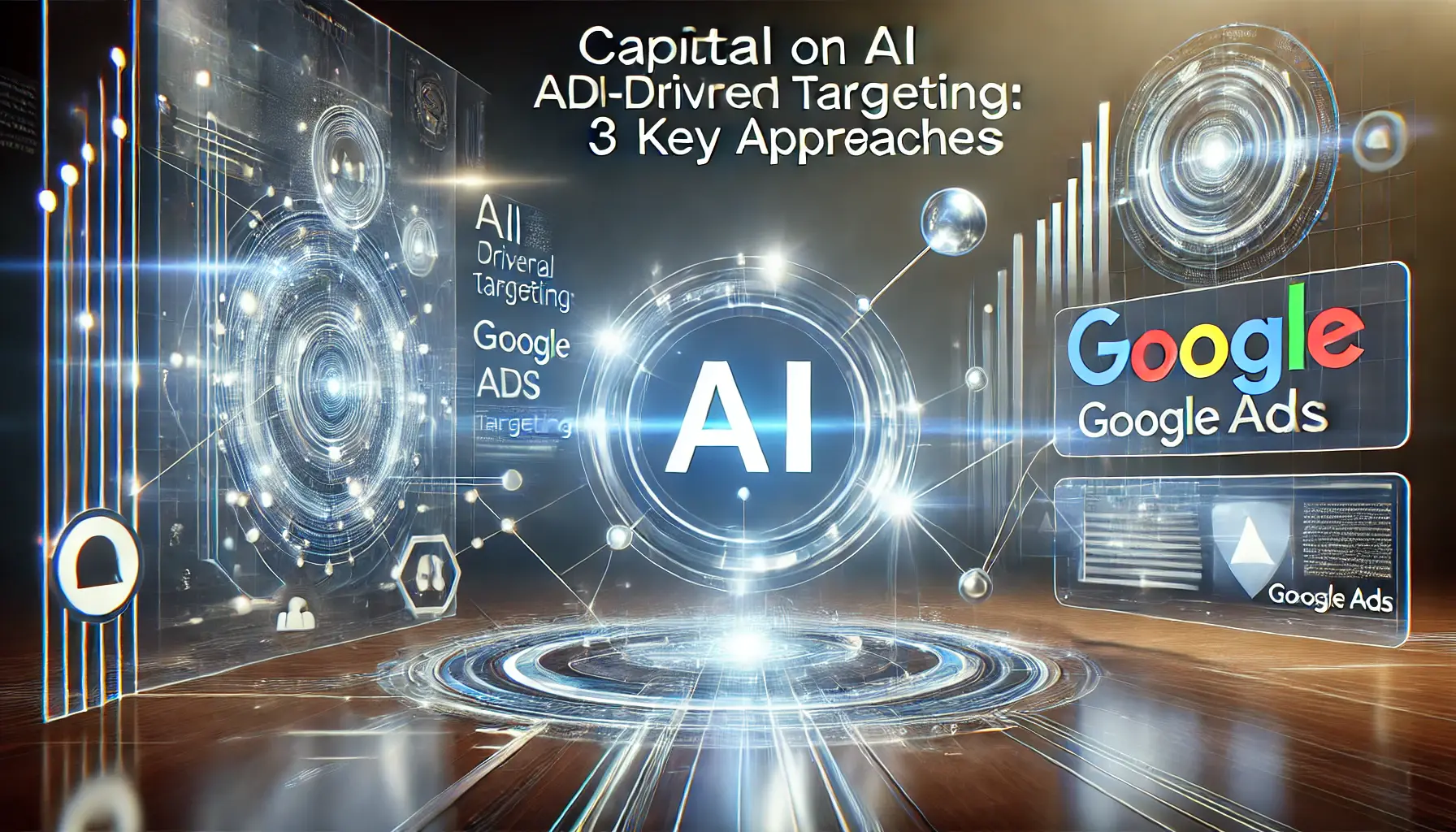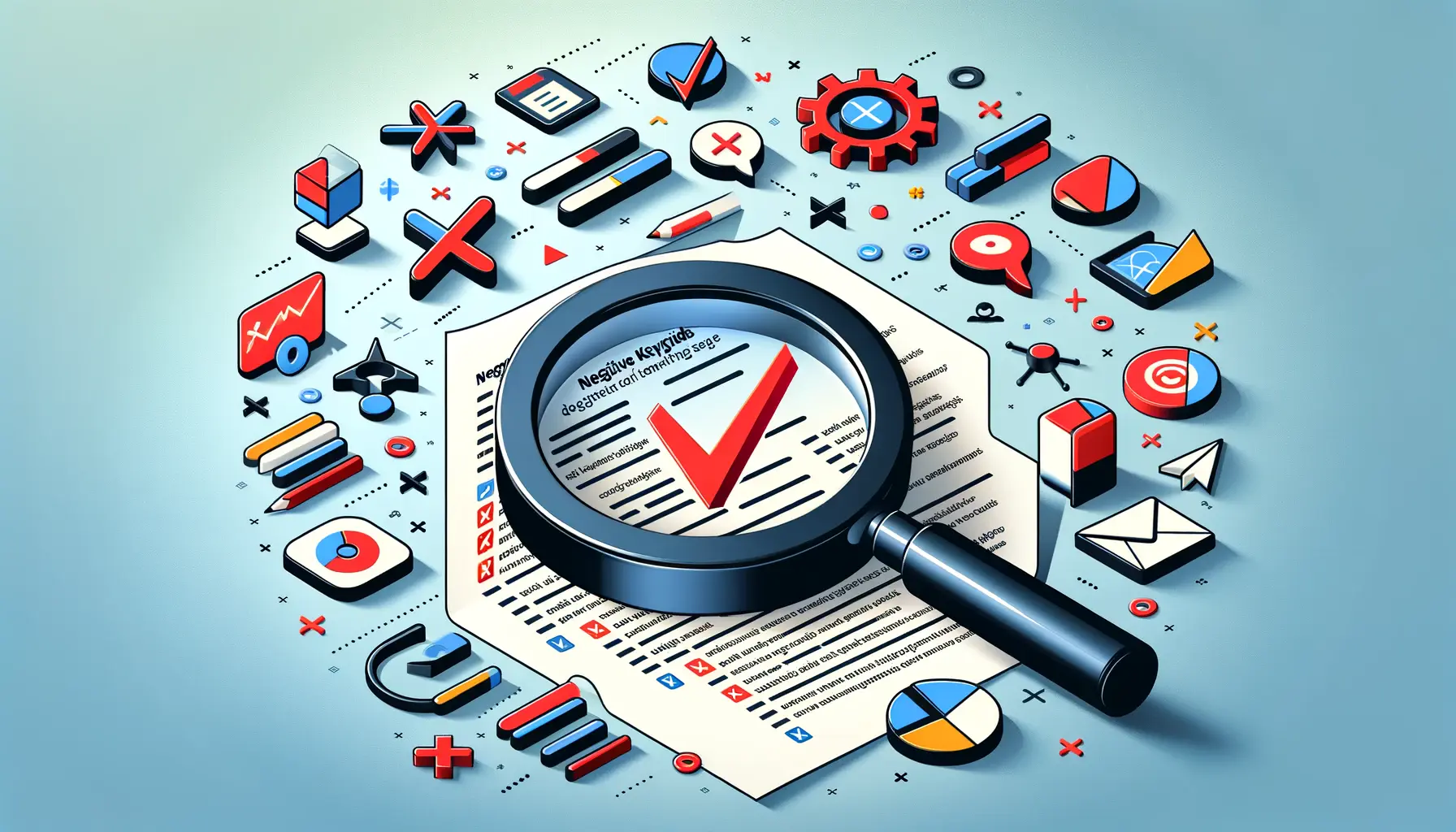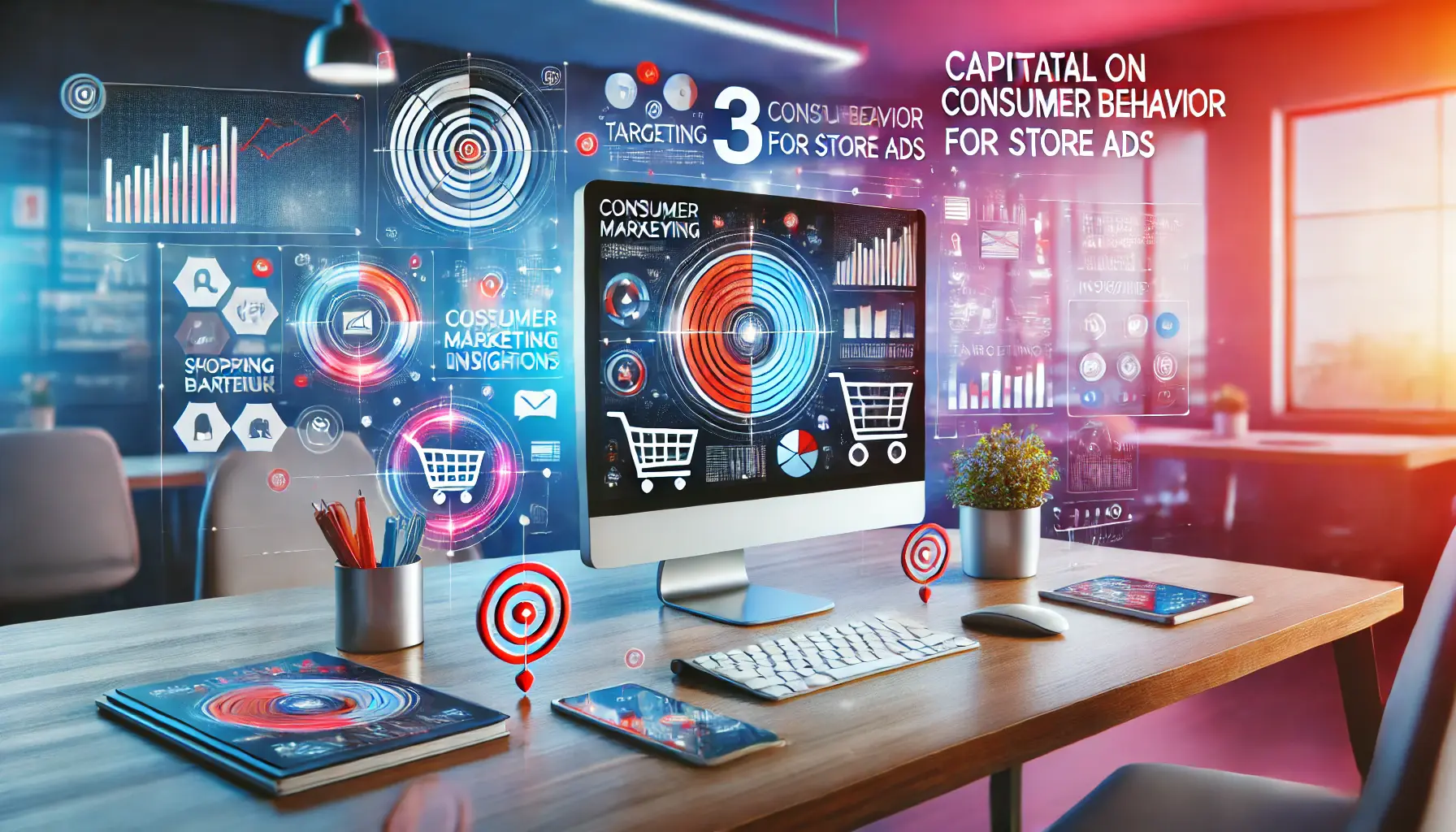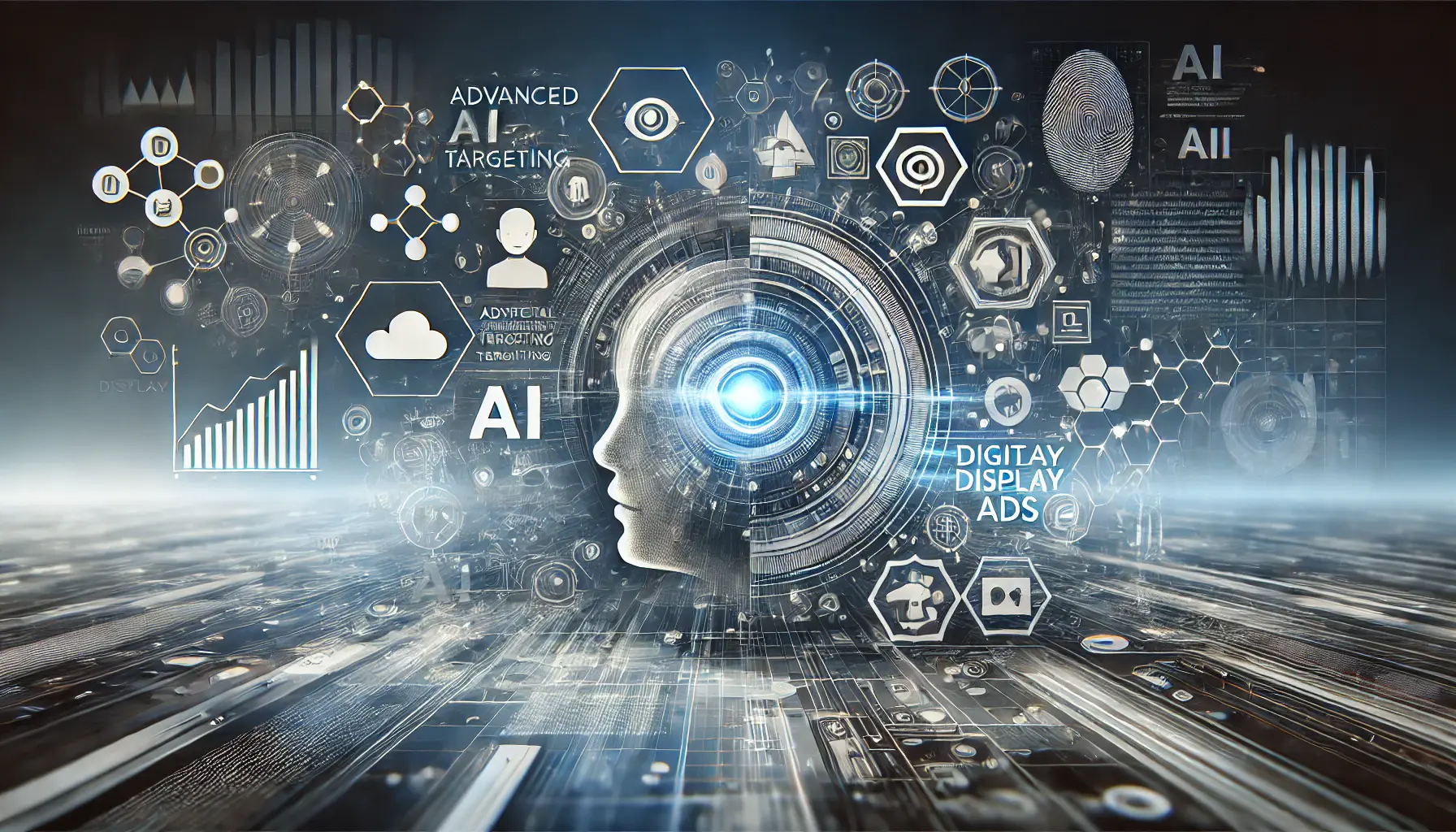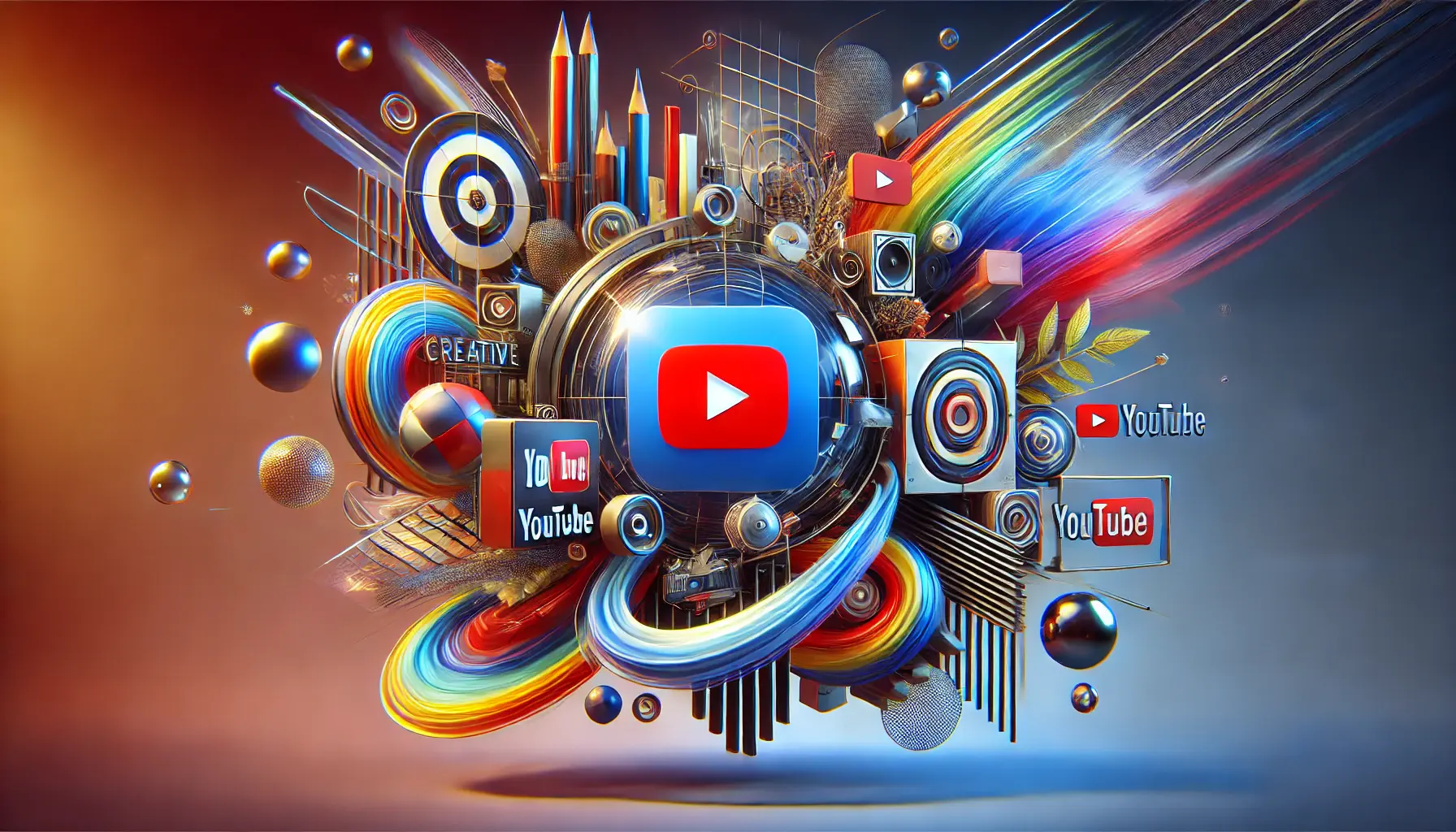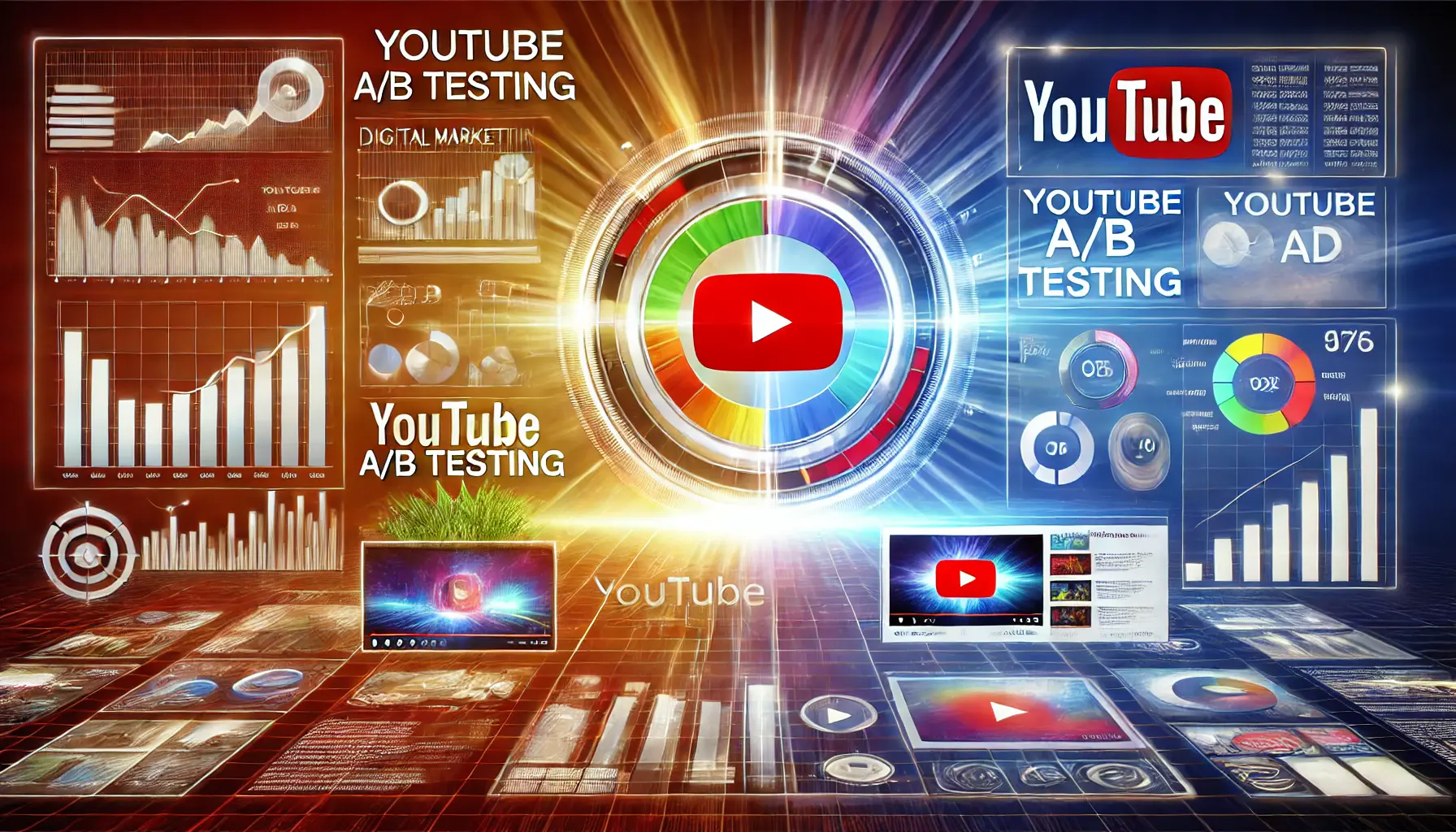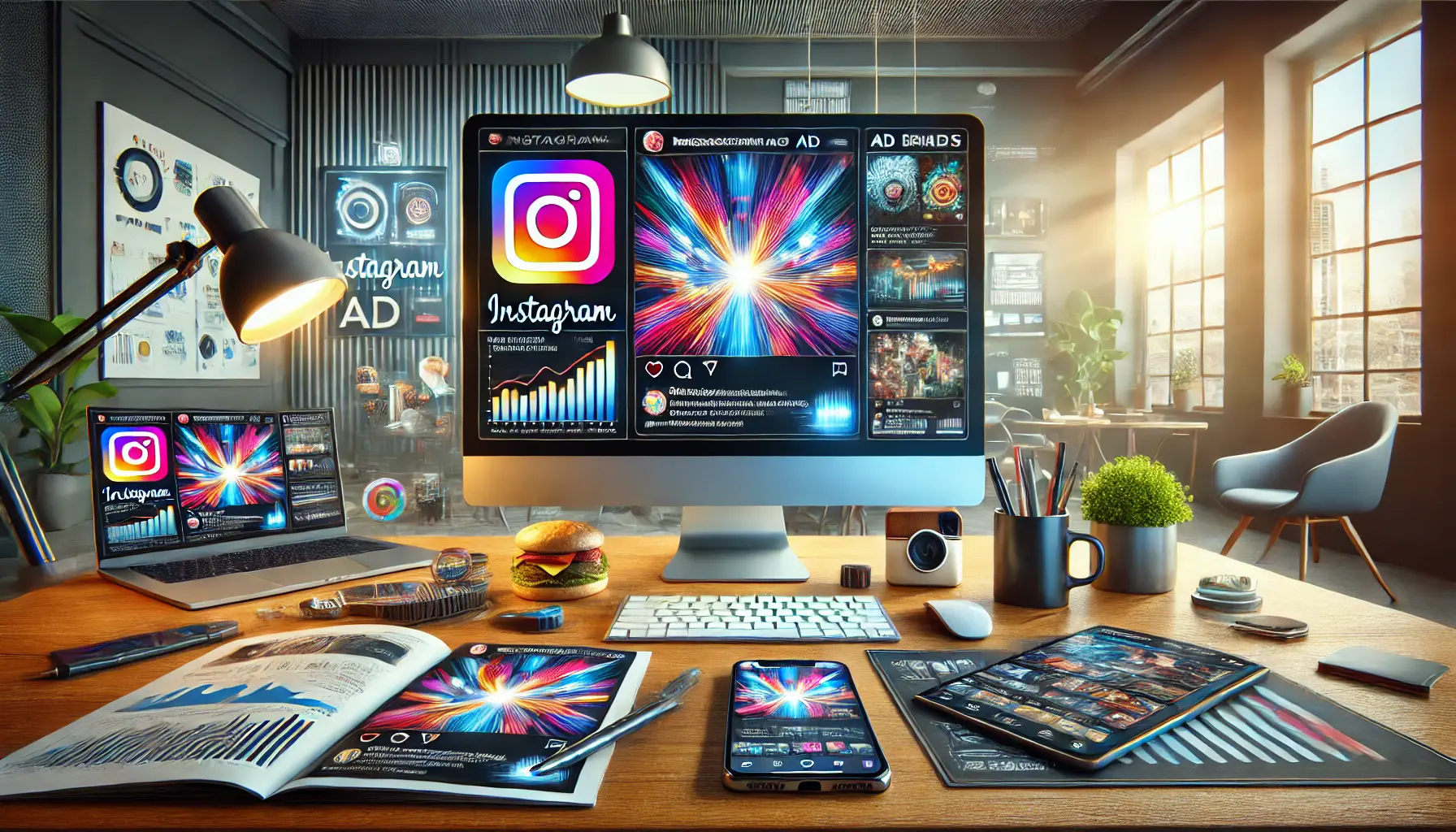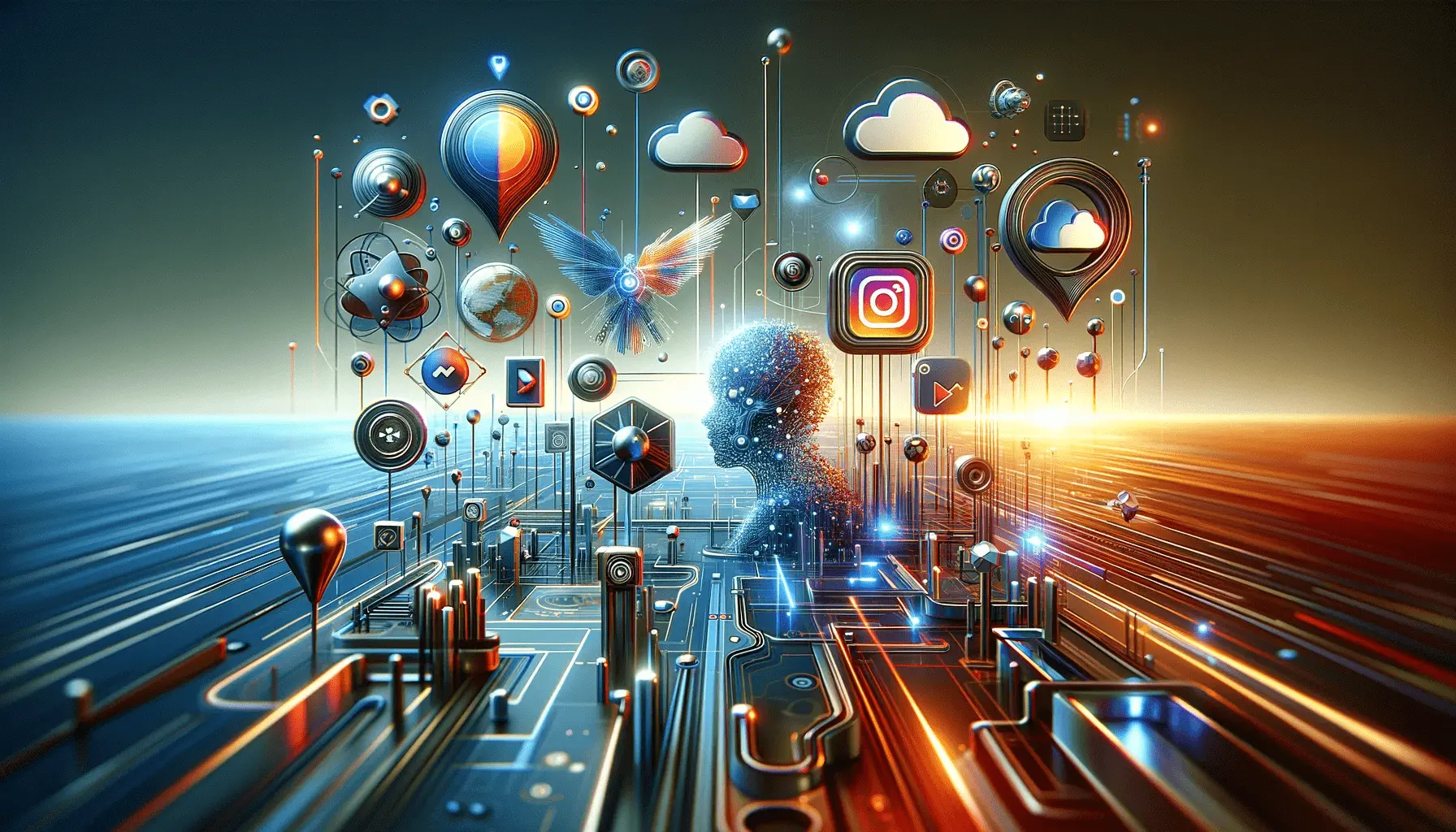In the fast-moving world of digital marketing, the need to leverage cutting-edge technology has become a significant factor in edging out the competition.
Probably the most revolutionary development in recent times is AI-driven targeting.
This innovative approach enables marketers to craft highly personalized, efficient, and effective ad campaigns.
If you’re looking to maximize your ROIReturn on Investment; a measure of the profitability of an investment. and streamline your Google Ads strategy, understanding the potential of AI-driven targeting is your first step.
Let’s dive deep into this revolutionary tool and explore how it can transform your advertising efforts.
- Understanding AI-Driven Targeting in Google Ads
- Implementing AI-Powered Strategies for Enhanced Ad Performance
- Measuring Success: Analytics and AI in Advertising
- Overcoming Challenges in AI-Driven Advertising
- Future Trends in AI-Driven Targeting for Google Ads
- Conclusion: Unlocking the Potential of AI-Driven Targeting
- Frequently Asked Questions about AI-Driven Targeting in Google Ads
Understanding AI-Driven Targeting in Google Ads
AI-driven targeting has revolutionized the way advertisers connect with their audience.
By utilizing artificial intelligence to analyze data and predict user behavior, this approach ensures that your ads reach the right people at the right time.
But what exactly does AI-driven targeting entail?
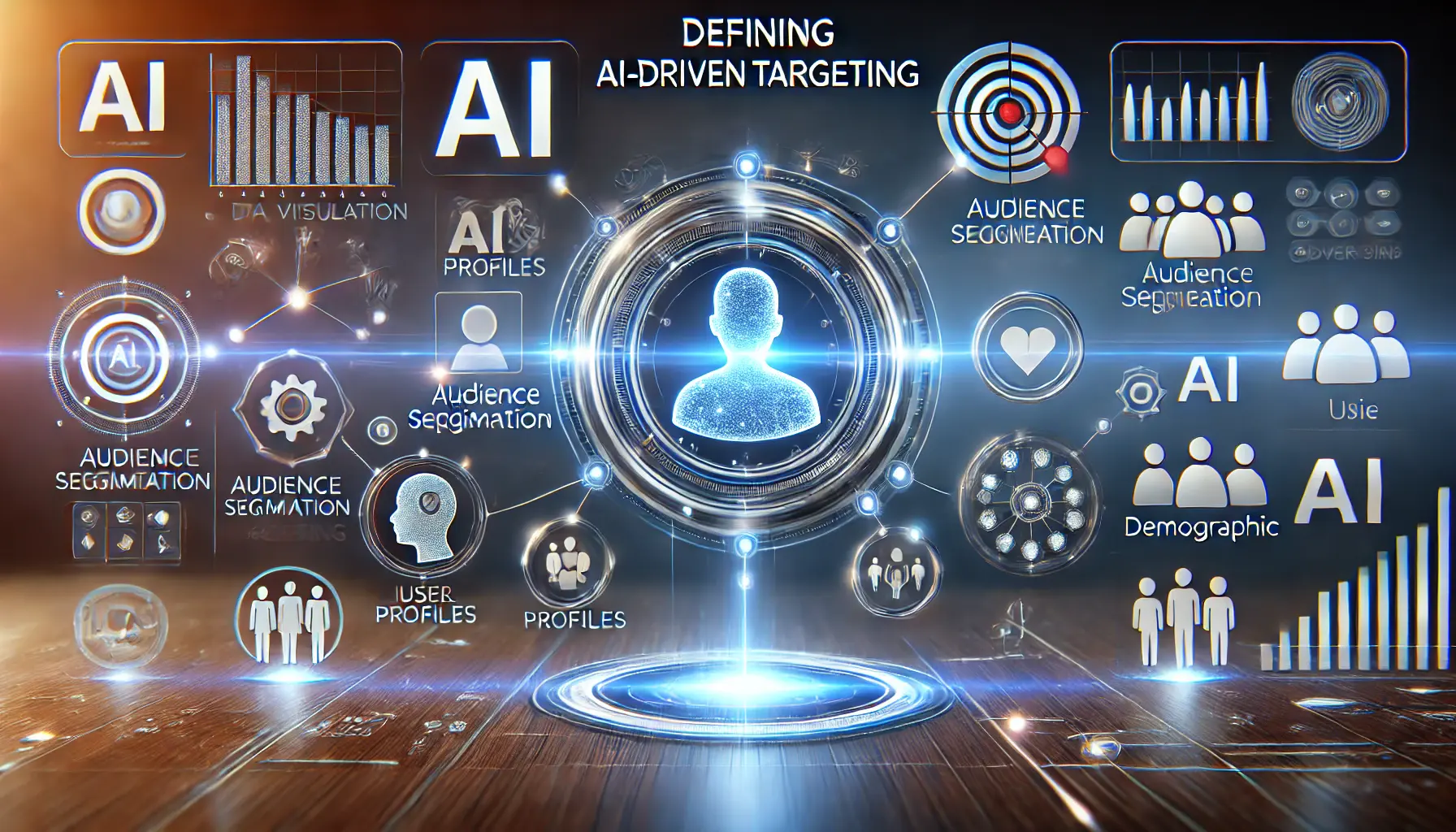
An artistic representation of AI-driven targeting showcasing precision in audience segmentation.
Defining AI-Driven Targeting
AI-driven targeting uses machine learning algorithms to gather insights from vast datasets, including user demographicsStatistical data about the characteristics of a population, such as age, gender, or income., online behaviors, and purchase patterns.
These insights allow advertisers to create precise audience segments and tailor their campaigns to specific interests and needs.
Unlike traditional methods, AI adapts in real-time, making your campaigns more effective as they progress.
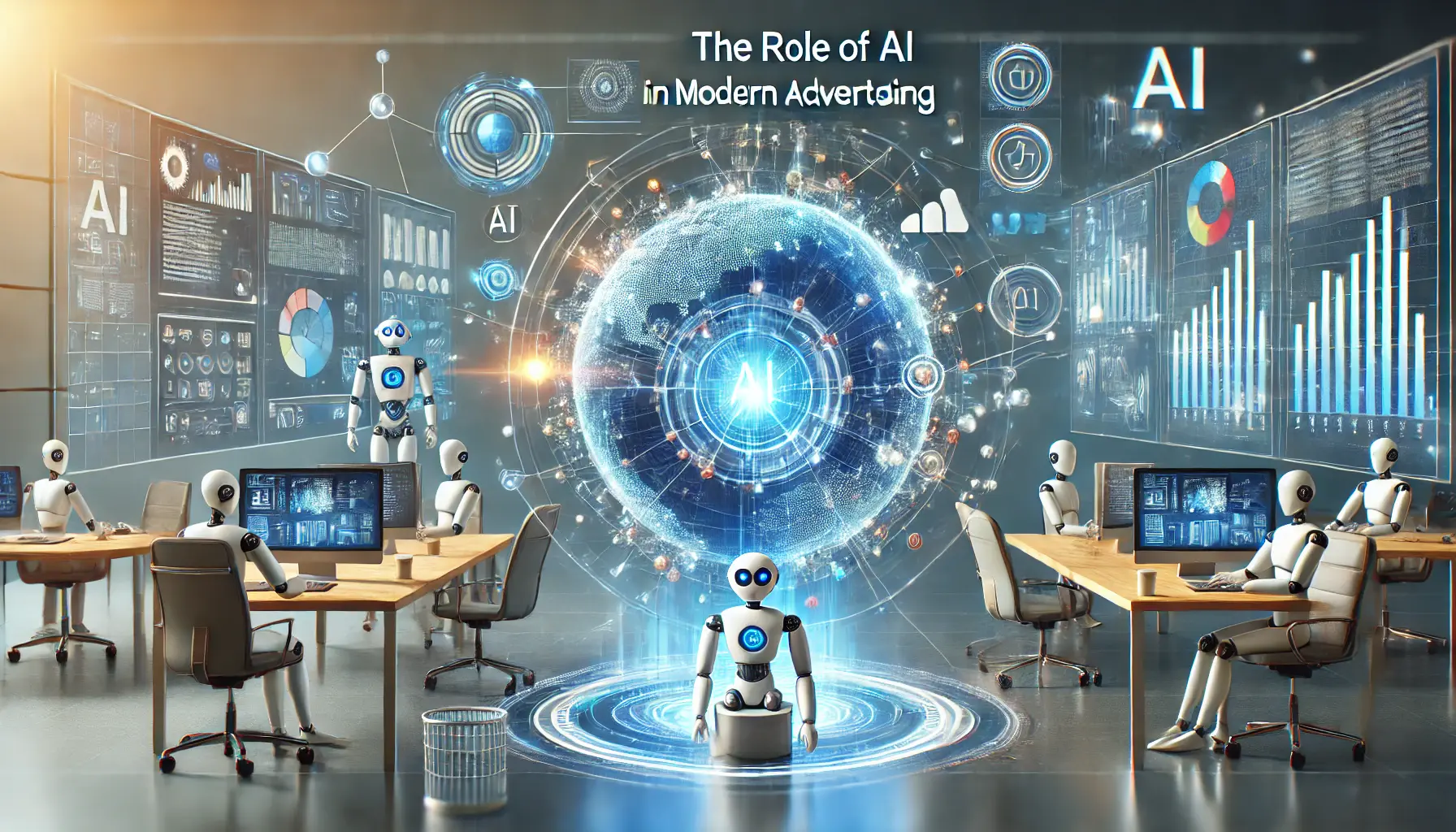
A visualization of AI’s transformative role in modern advertising through advanced technology and analytics.
The Role of AI in Modern Advertising
Artificial intelligence plays a crucial role in modern advertising by automating complex processes and providing actionable insights.
From analyzing search queries to predicting conversion probabilities, AI reduces the guesswork involved in campaign management.
It allows advertisers to allocate resources more efficiently and focus on crafting creative content that resonates with their target audience.
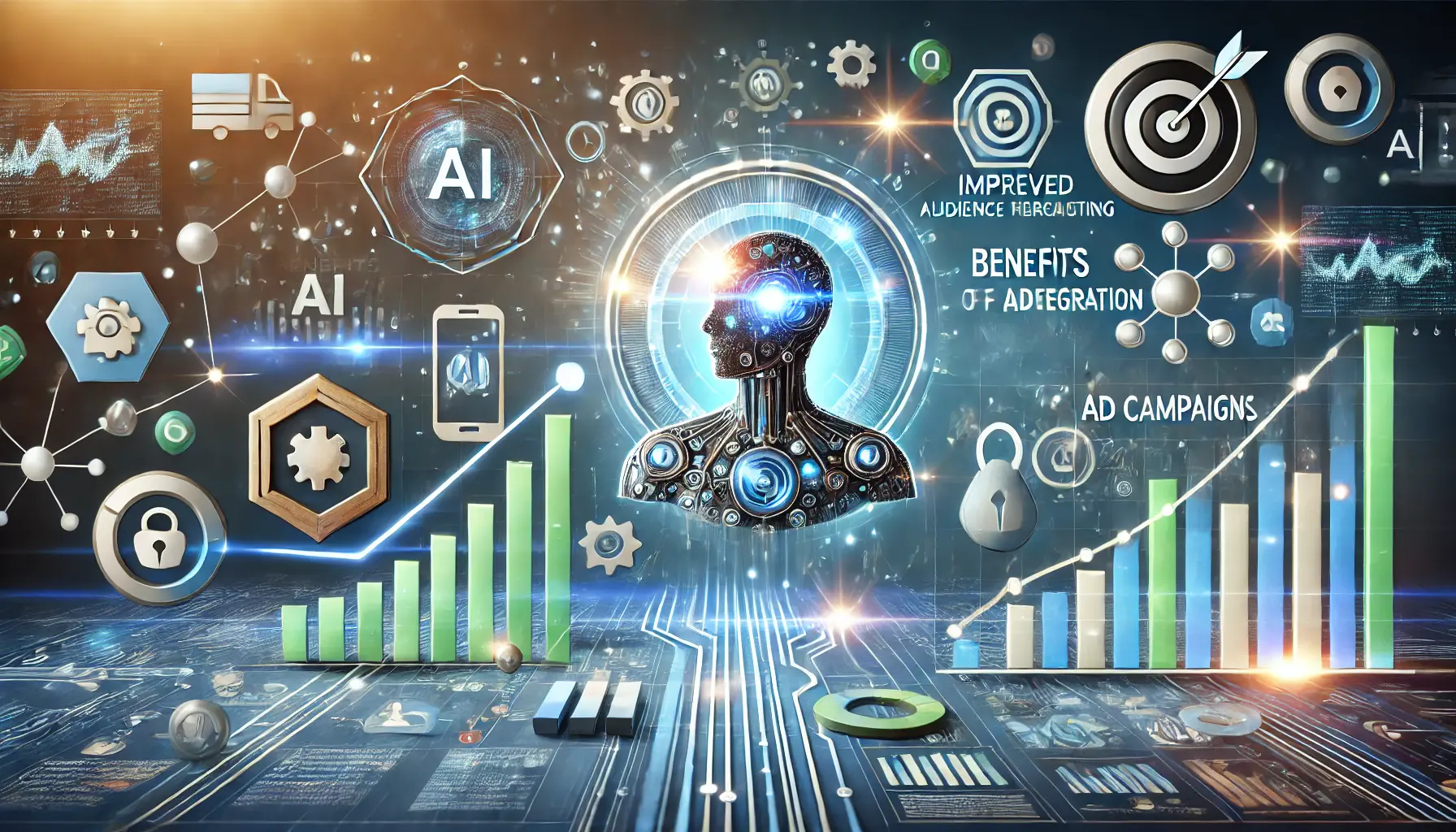
A visual representation of the positive impact of AI integration in ad campaigns, focusing on optimization and performance.
Benefits of AI Integration in Ad Campaigns
Integrating AI into your advertising strategy offers numerous benefits, including:
- Increased accuracy: AI recognizes data patterns, ensuring your ads reach the most targeted audience.
- Value for money: It prevents unnecessary wastage by targeting the correct users, thanks to AI.
- Real-time optimization: AI analyzes constant performance metrics and readjusts campaigns in pursuit of optimal results.
- Personalization: With AI, ad personalization becomes dynamic, allowing deeper interaction with prospective customers in a far more meaningful manner.
By grasping these core concepts, you will be better positioned to unlock the full potential of AI-driven targeting in your Google Ads campaigns.
Continue reading as we dive into how to effectively apply these strategies.
AI-driven targeting enables advertisers to connect with audiences at the right time using advanced data analytics, revolutionizing Google Ads campaigns.

A visual depiction of AI-powered strategies in digital advertising, focusing on campaign optimization and data-driven insights.
Implementing AI-Powered Strategies for Enhanced Ad Performance
Integrating AI-driven targeting into your Google Ads campaigns can significantly boost their effectiveness.
By leveraging AI, you can automate processes, gain deeper insights, and optimize your advertising efforts.
Let’s explore some key strategies to enhance your ad performance using AI.
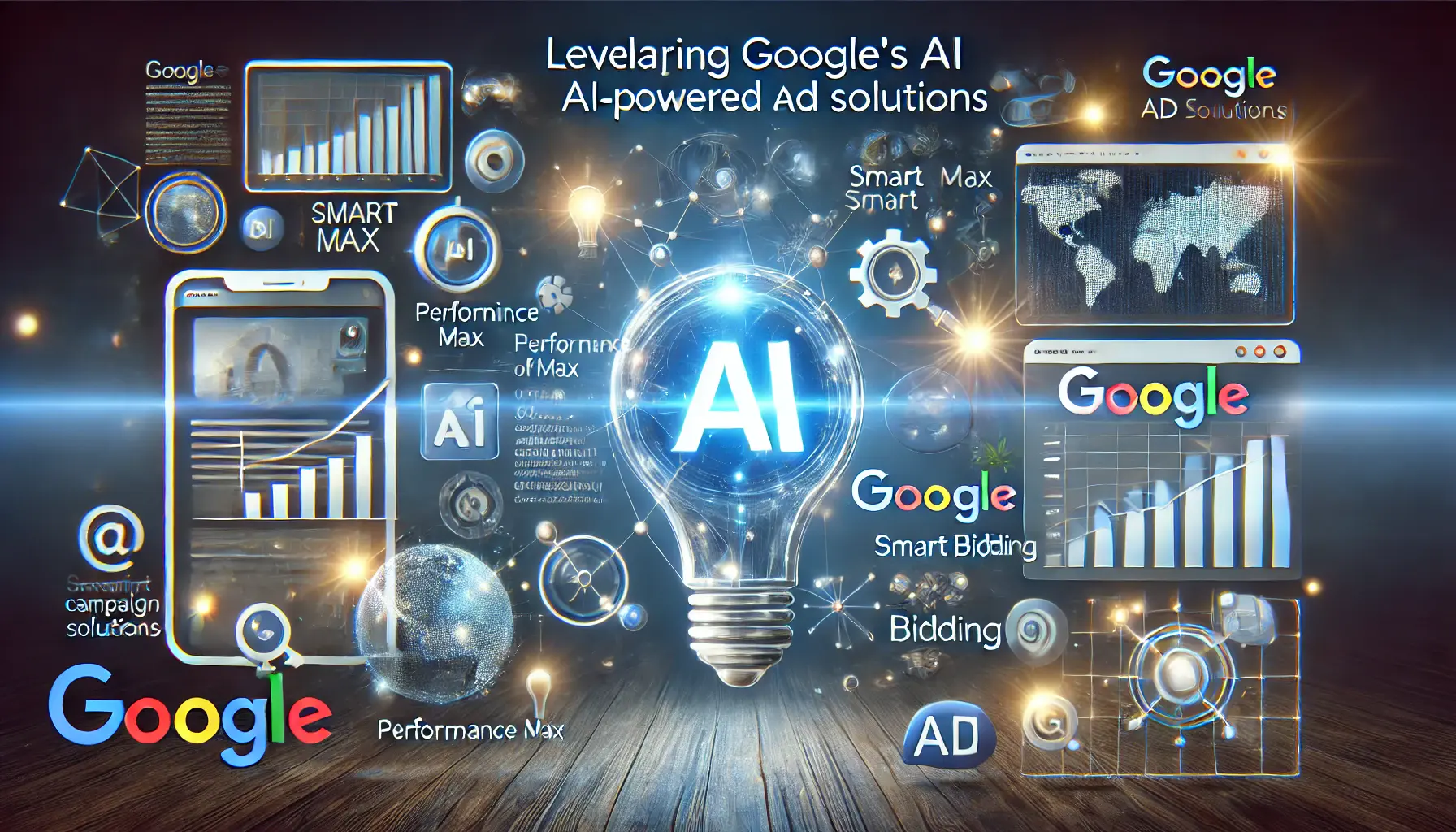
A visualization of the integration of Google’s AI tools in digital advertising, emphasizing campaign optimization and real-time adjustments.
Leveraging Google’s AI-Powered Ad Solutions
Google has a range of AI-powered tools for maximizing your advertising impact.
Applied together, they help you reach new customers and unlock more performance opportunities.
For example, you can drive more conversions on all Google platforms by running AI-powered Search campaigns together with Performance Max campaignsGoogle Ads campaigns that use AI to automate targeting and delivery across multiple platforms..
Doing so lets you tap into new demand and capture incremental results from new search queries, channels, and audiences.
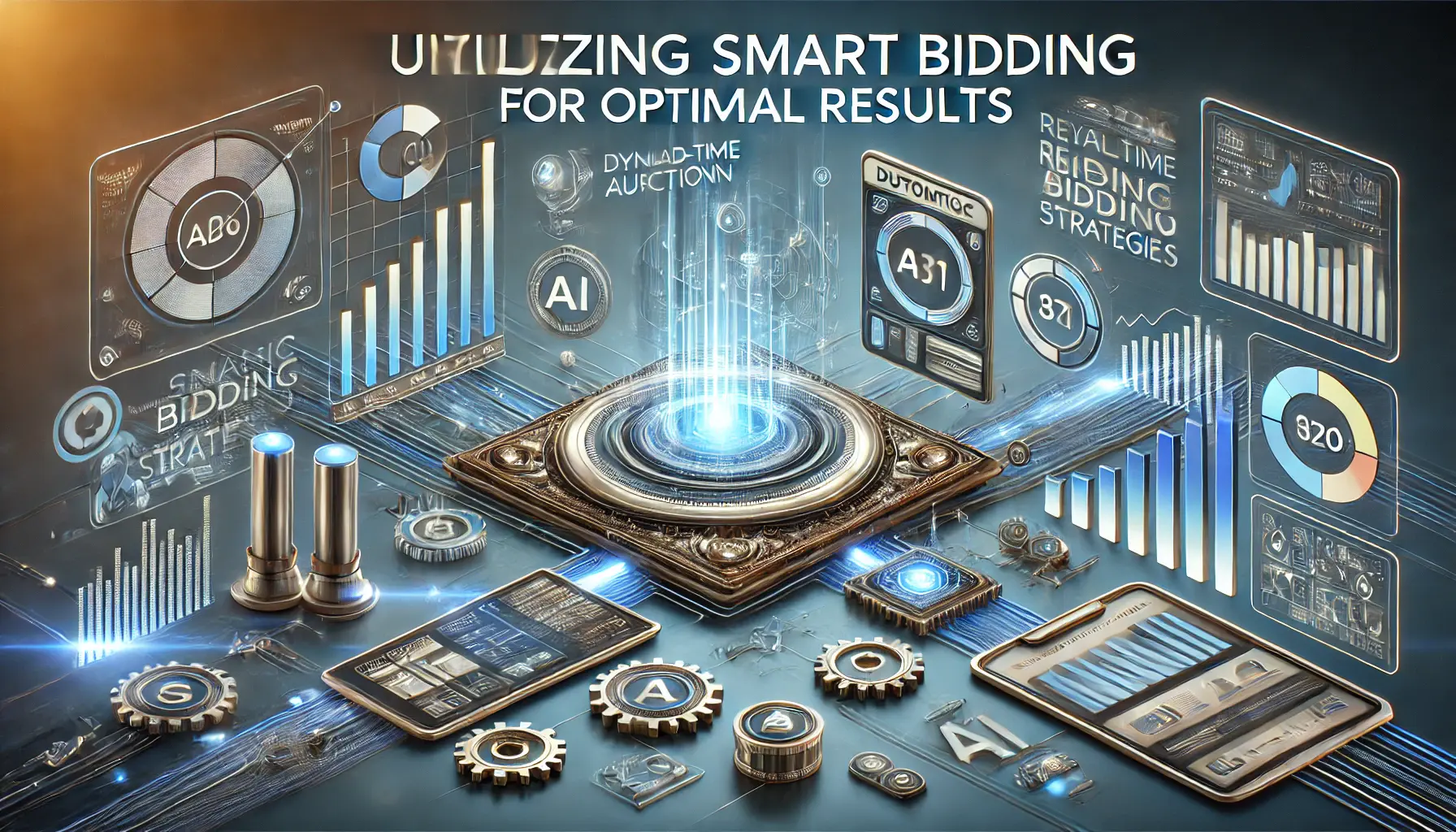
A visual representation of utilizing smart bidding strategies in digital advertising for optimal results.
Utilizing Smart Bidding for Optimal Results
Smart Bidding is an AI-powered feature in Google Ads that automates bid strategies to optimize for conversions or conversion value in every auction.
By analyzing a wide range of contextual signals, including device, location, and time of day, Smart BiddingAn AI-powered feature in Google Ads that automates bid strategies for optimal performance. adjusts the bids in real time to maximize the performance of your campaign.
This leads to efficient use of your budget and improves your return on investment.
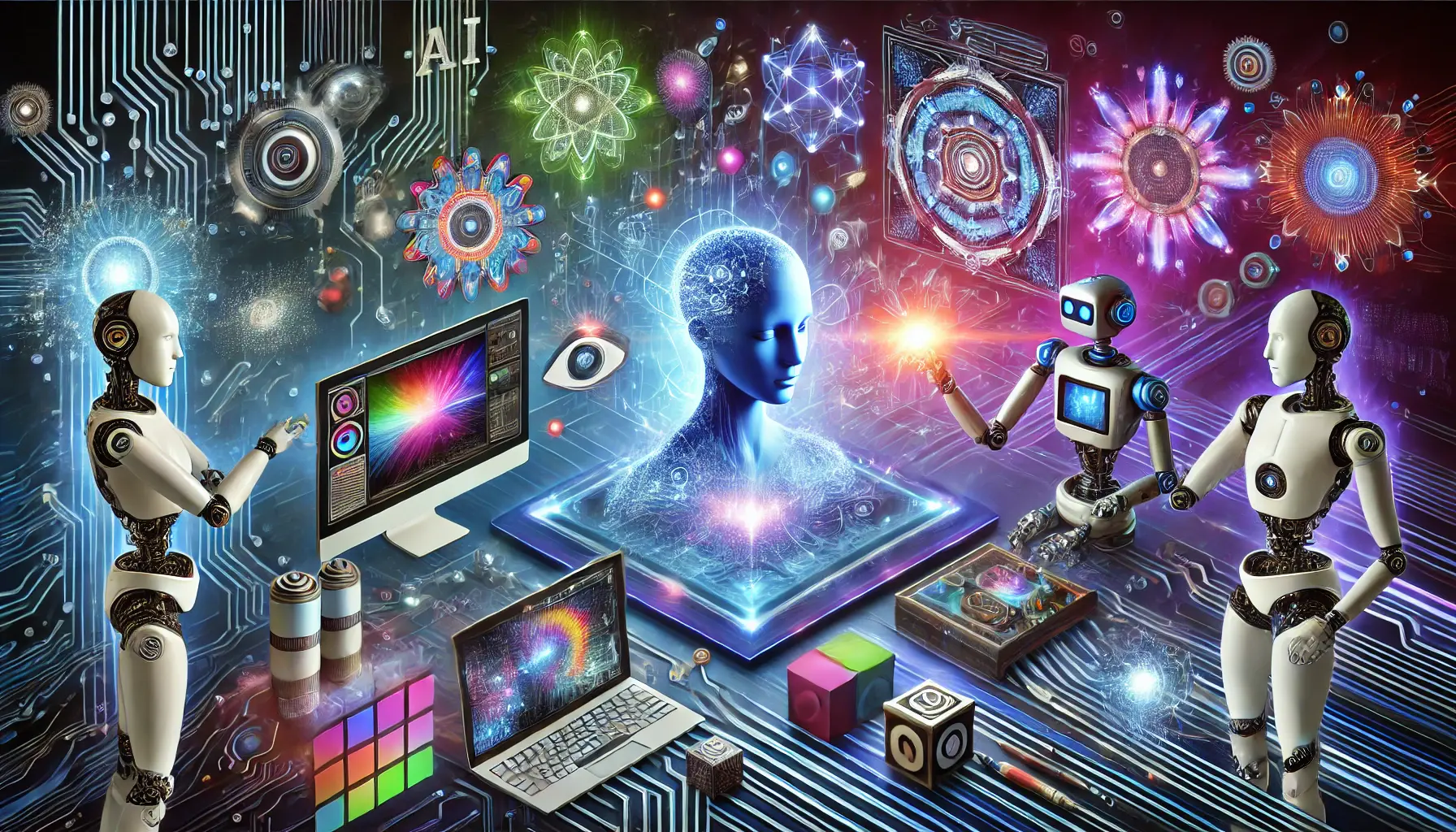
A visual representation of AI amplifying creativity in content generation, combining digital art, video, and text creation.
Amplifying Creativity with AI-Generated Content
AI is not just about automating processes; it is also an important aspect of developing creative content.
AI-powered tools help you create ad creatives that resonate with your target audience.
For instance, Google’s AI makes your ads more relevant and personal by analyzing consumer insights and trends, helping you build more engaging ads that not only reach your audience but also resonate well with them.
By embracing these AI-powered strategies, you can elevate your Google Ads campaigns to a whole new level of effectiveness.
The integration of AI-driven targeting enables you to connect with your audience at a more personalized level than ever before, leading to higher ad performance and business growth.
Maximize Google Ads performance by integrating AI-powered tools such as Smart Bidding and Performance Max campaigns for real-time optimization and precise targeting.
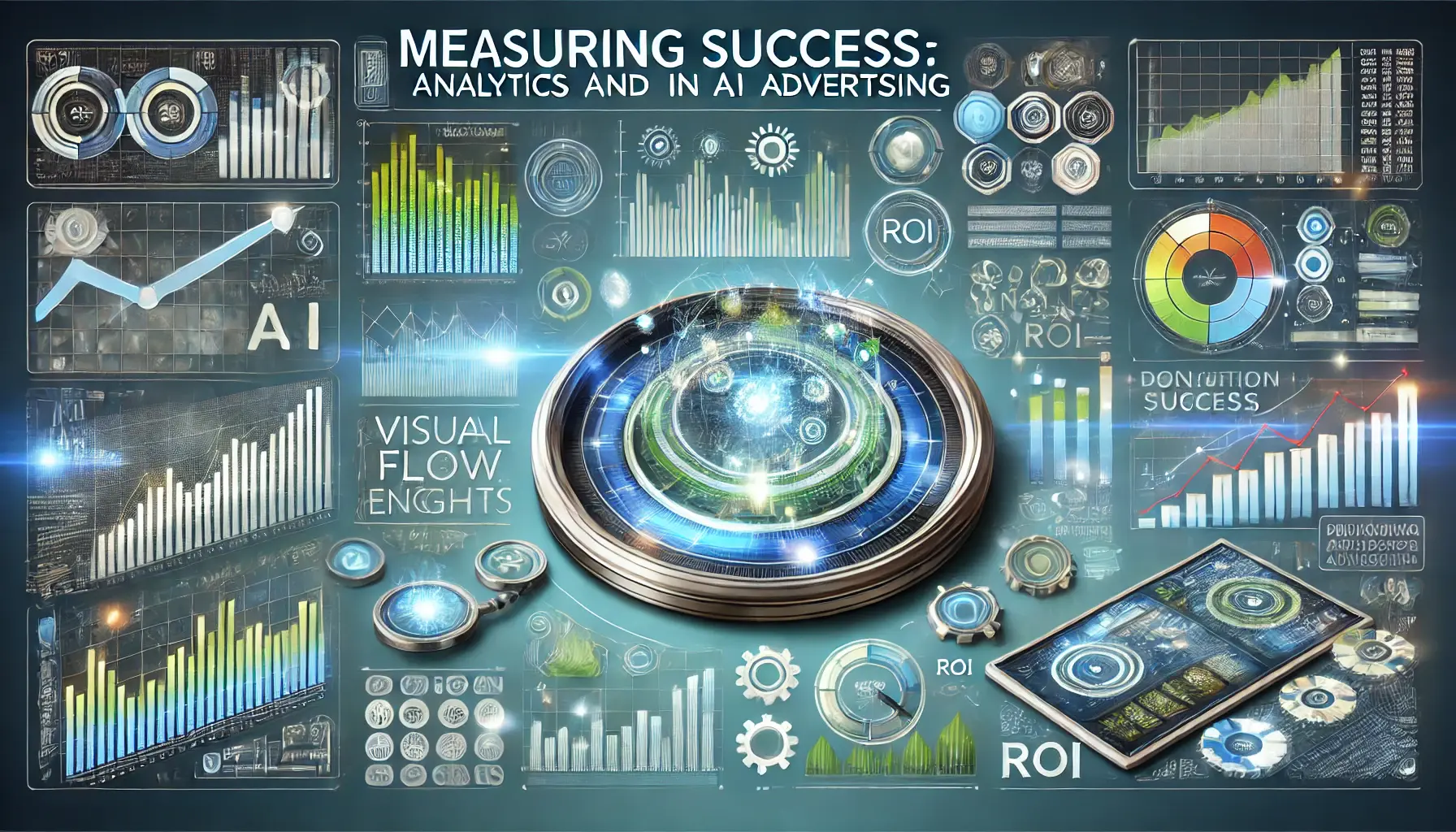
A depiction of the integration of AI and analytics in measuring the success of advertising campaigns.
Measuring Success: Analytics and AI in Advertising
Understanding the impact of your advertising efforts is crucial for optimizing campaigns and achieving desired outcomes.
Artificial intelligence (AI) has revolutionized this process by providing advanced tools that offer deeper insights and more accurate measurements.
Let’s explore how AI enhances ad performance analysis and the key metrics to focus on.
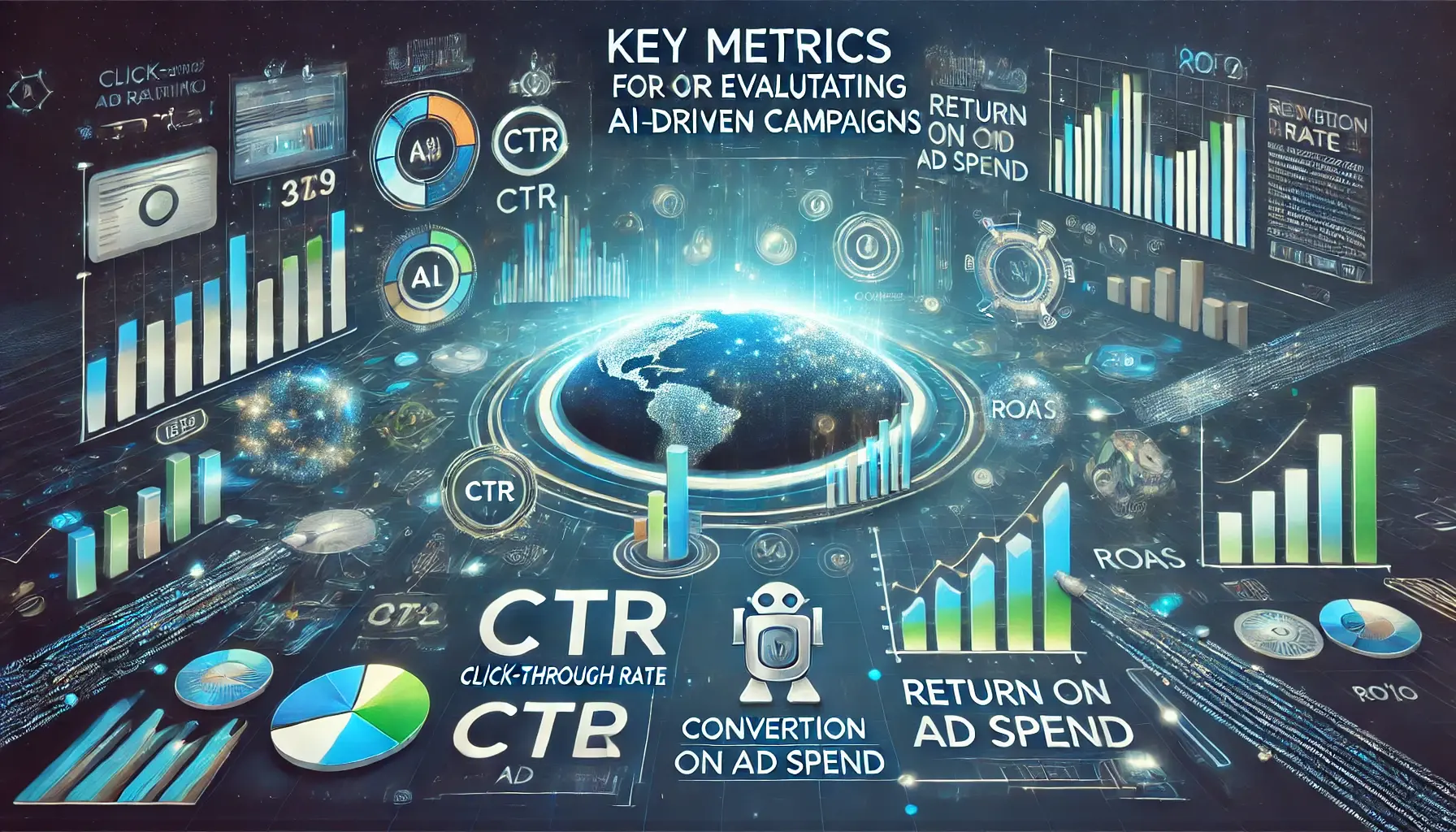
A depiction of key metrics used to evaluate AI-driven advertising campaigns, showcasing important performance indicators.
Key Metrics for Evaluating AI-Driven Campaigns
To effectively gauge your AI-driven advertising campaigns, consider the following key metrics:
- Click-Through Rate (CTR): The percentage of users who click on your ad after seeing it provides a good indication of the ad’s immediate appeal.
- Conversion Rate: The number of ad interactions that lead to desired user actions, such as purchases or sign-ups, indicates an ad’s effectiveness in driving outcomes.
- Return on Ad Spend (ROAS): The revenue generated for every dollar spent on advertising highlights the profitability of the campaign.
- Engagement Metrics: Likes, shares, comments, and other interactions reveal how users are engaging with your ad content.
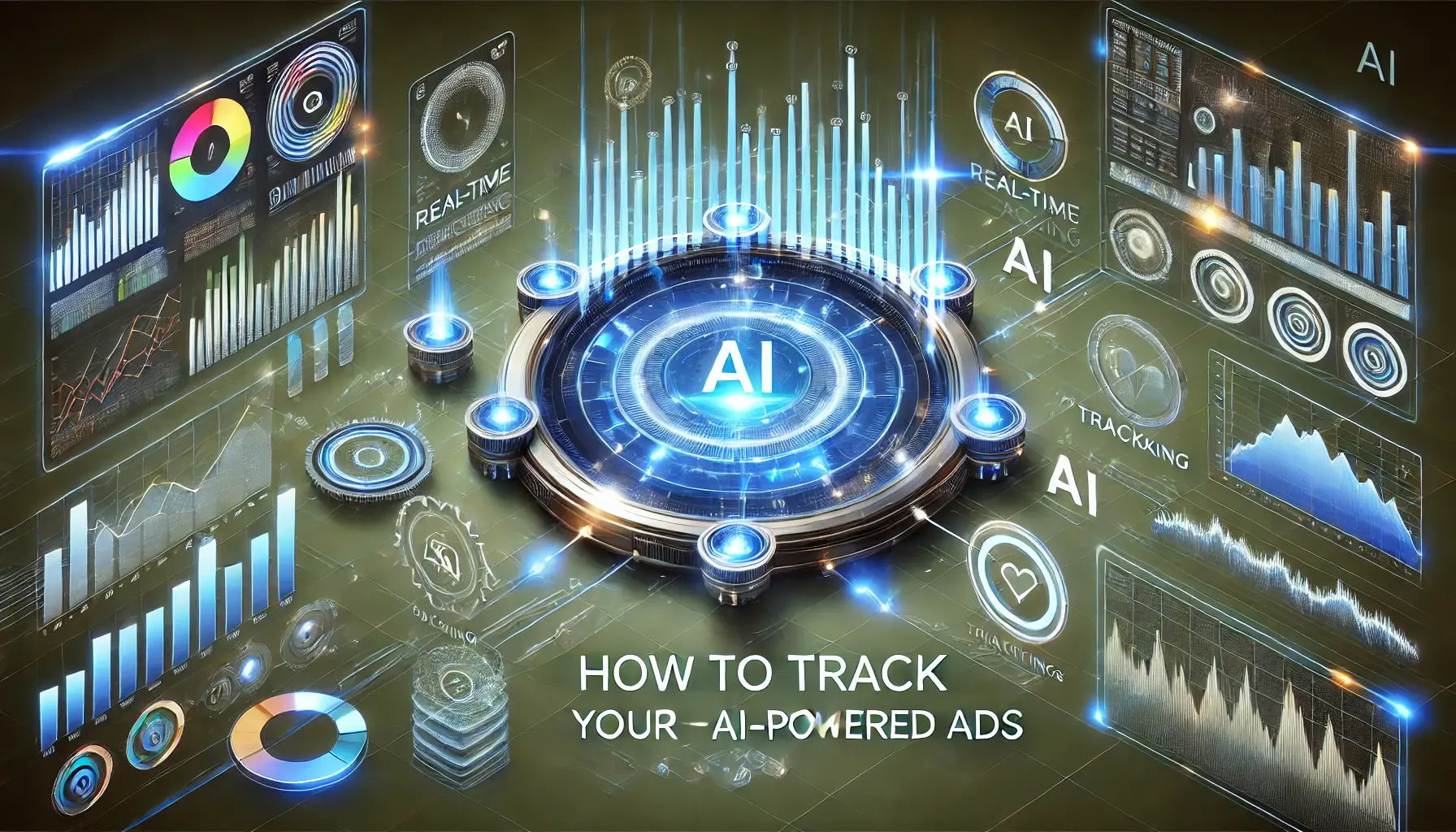
A depiction of tracking AI-powered ads through advanced analytics and real-time performance monitoring.
How to Track Your AI-Powered Ads
There are several AI-powered tools that can help track and analyze your advertising campaigns:
- Google Analytics: Provides comprehensive information about user behavior and campaign effectiveness, with AI-powered predictive capabilities.
- Adobe Analytics: Leverages AI to deliver in-depth insights into customer journeys and ad effectiveness across multiple channels.
- IBM Watson Marketing: Uses AI to offer personalized marketing insights and performance metrics.
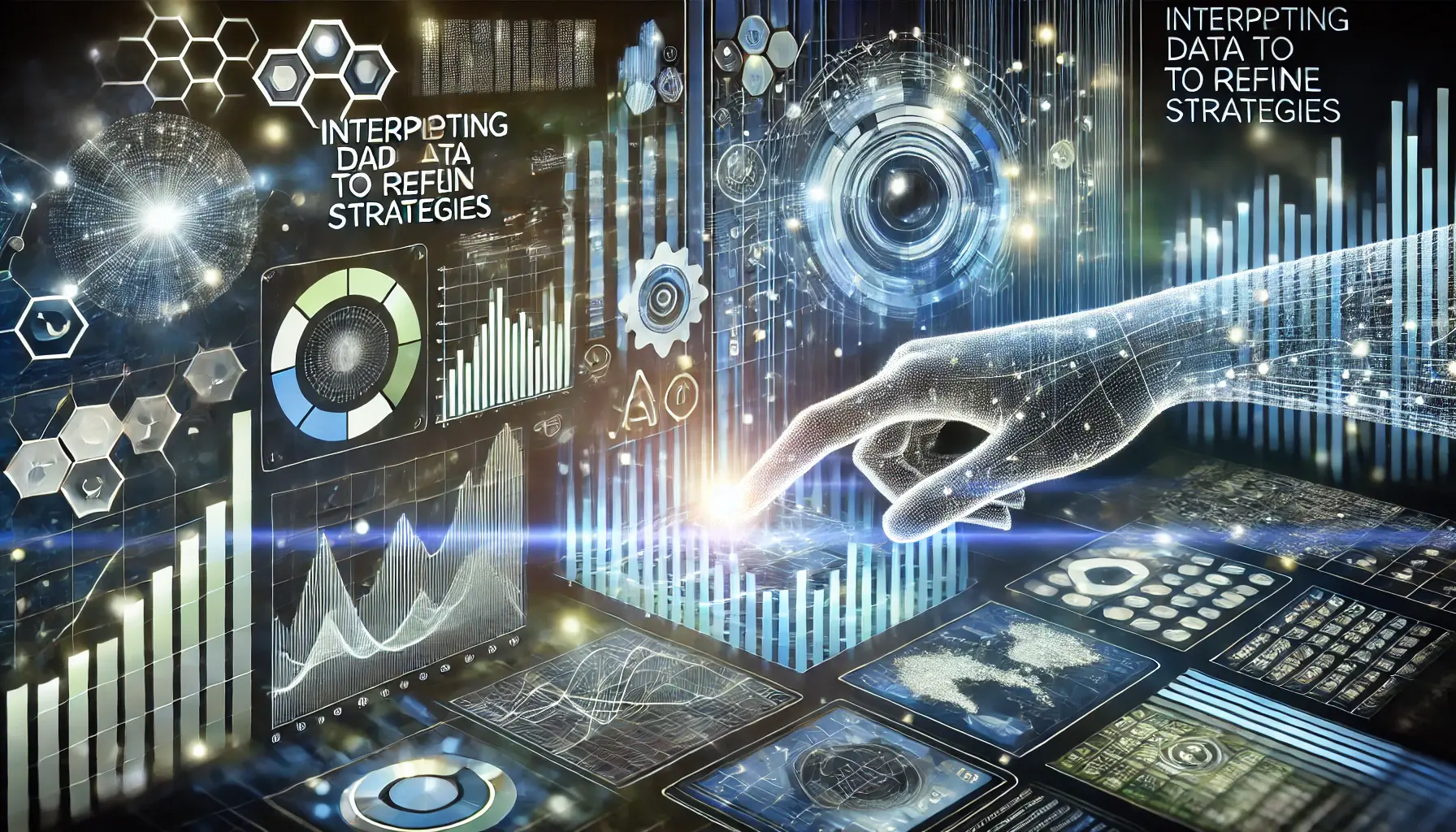
undefined
Interpreting Data to Refine Strategies
Analyzing the data collected from campaigns enables you to make informed decisions to optimize your advertising methods.
AI helps by identifying patterns and predicting future trends to proactively make adjustments.
Consider the following steps:
- Identify Underperforming Areas: AI analytics help pinpoint areas in your campaign that are not performing as expected and need improvement.
- Test and Learn: Run A/B testing to compare various ad elements and use AI to analyze the results for actionable improvements.
- Personalize Content: Use AI insights to customize your ad creatives for specific audience segments, improving relevance and engagement.
By leveraging AI-driven analytics, you can contextualize how well your ads are performing and continuously evolve your advertising strategies for maximum efficiency and effectiveness.
Key metrics like CTR, ROAS, and engagement provide insights into campaign performance. Use AI-driven tools like Google Analytics for deeper data analysis.
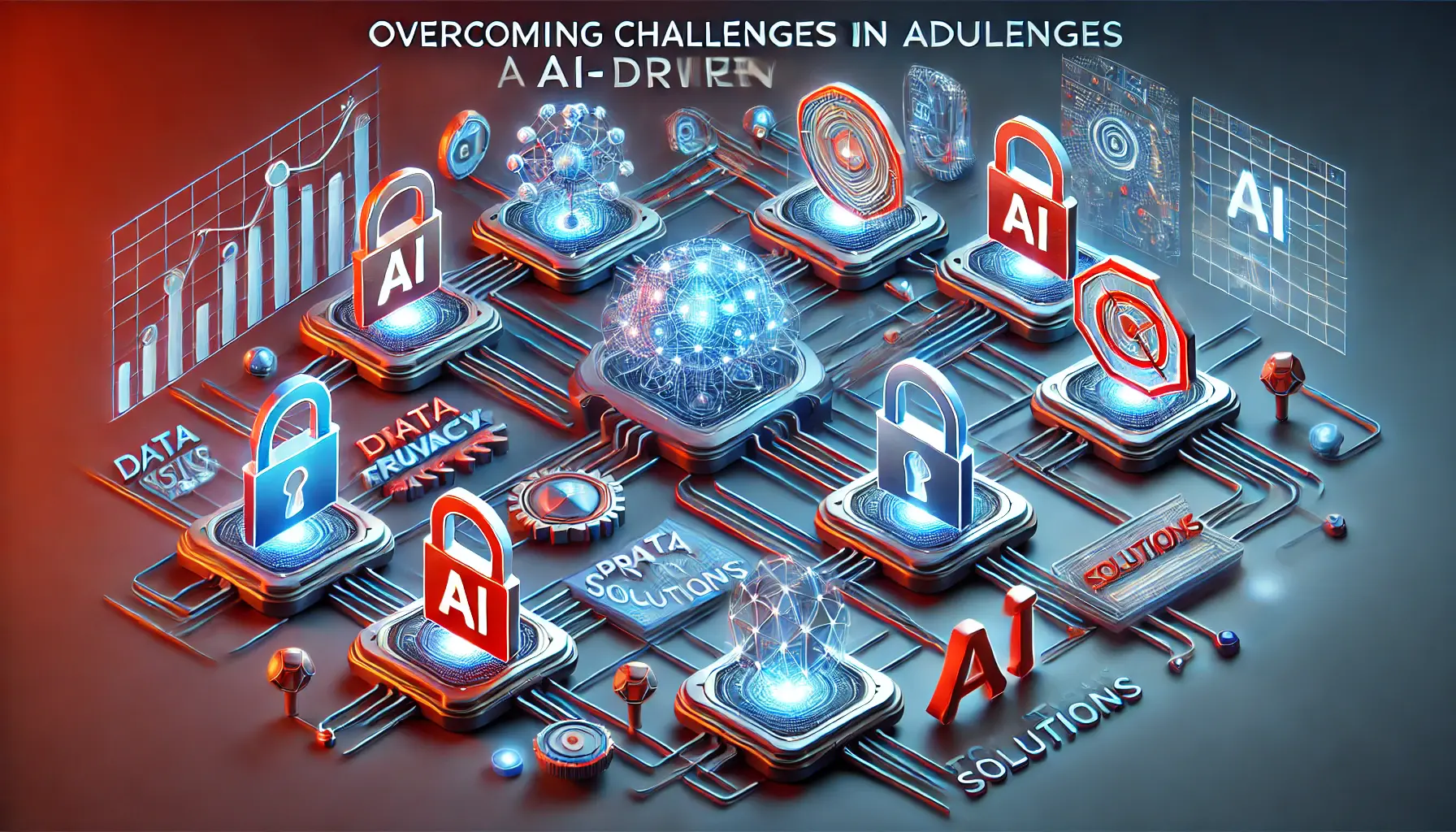
A depiction of overcoming obstacles in AI-driven advertising, focusing on privacy concerns and algorithm adjustments.
Overcoming Challenges in AI-Driven Advertising
While AI-driven targeting offers significant advantages in digital marketing, it also presents challenges that advertisers must address to ensure ethical and effective campaigns.
Key concerns include privacy issues, ethical considerations, and technological limitations.
Let’s explore these challenges and discuss strategies to overcome them.

A depiction of addressing privacy concerns in AI advertising, with digital security measures like encryption and locks.
Addressing Privacy Concerns
The extensive data collection inherent in AI-driven advertising raises substantial privacy concerns.
AI systems often process vast amounts of personal information, including browsing history, purchase behavior, and demographic details, which can lead to potential misuse or unauthorized access.
To mitigate these risks:
- Data Minimization: Collect only the data necessary for campaign objectives to reduce exposure of sensitive information.
- Ensure Transparency: Clearly inform users about data collection practices and obtain explicit consent, fostering trust and compliance with regulations.
- Adopt Privacy-Preserving Technologies: Utilize techniques such as differential privacy and federated learning to protect individual data while still enabling AI functionalities.
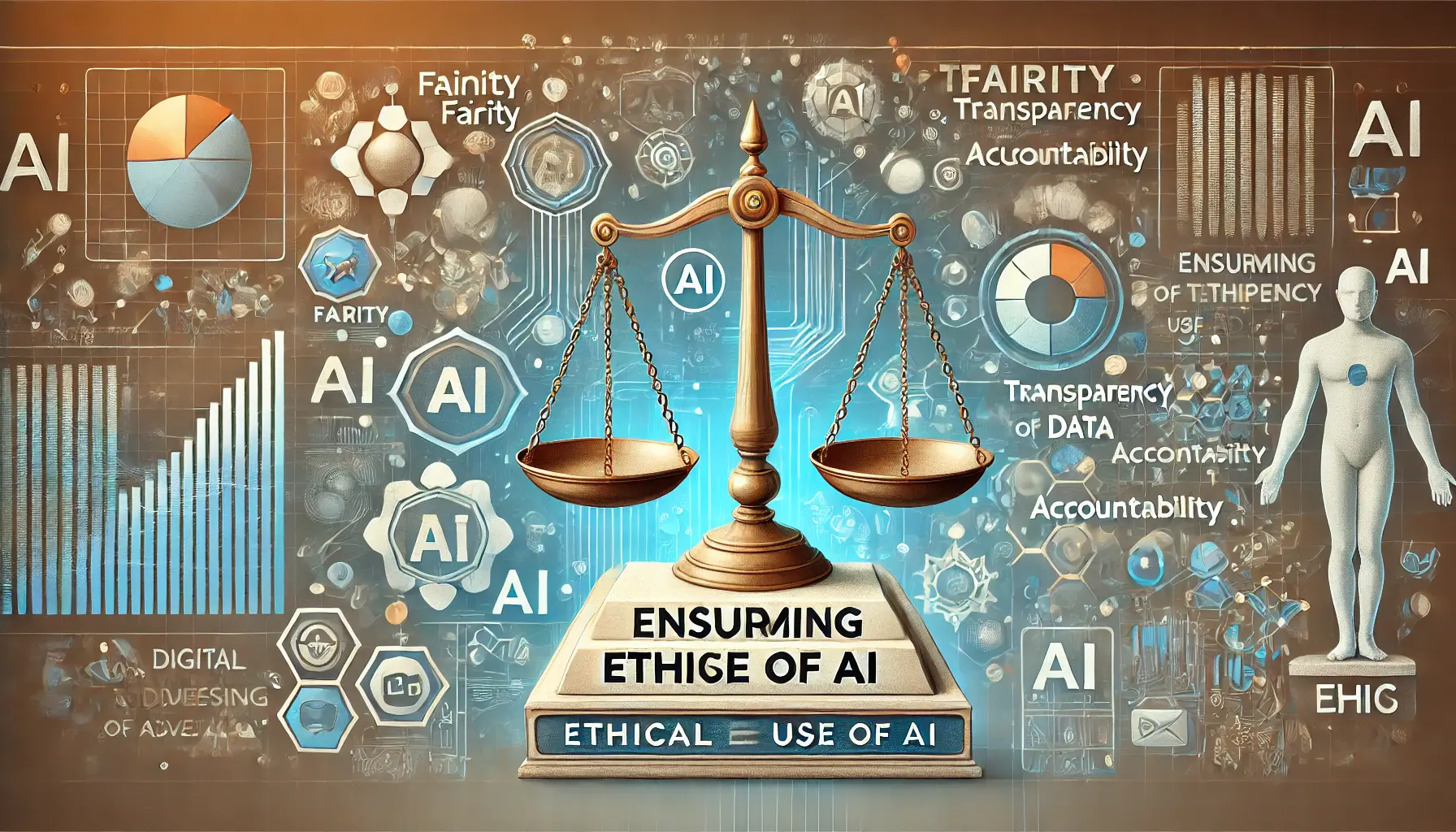
A depiction of ensuring ethical use of AI in digital advertising, emphasizing fairness, transparency, and accountability.
Ensuring Ethical Use of AI
AI algorithms can unintentionally perpetuate biases present in their training data, leading to discriminatory advertising practices.
To promote ethical AI usage:
- Regular Bias Audits: Periodically check AI systems for biased outcomes and make algorithmic adjustments to reduce unintended discrimination.
- Establish Ethical Guidelines: Create and follow ethical parameters that guide AI development and deployment in advertising with respect for all user groups.
- Foster Human Oversight: Maintain human involvement in AI decision-making to ensure contextual understanding and ethical considerations are applied.
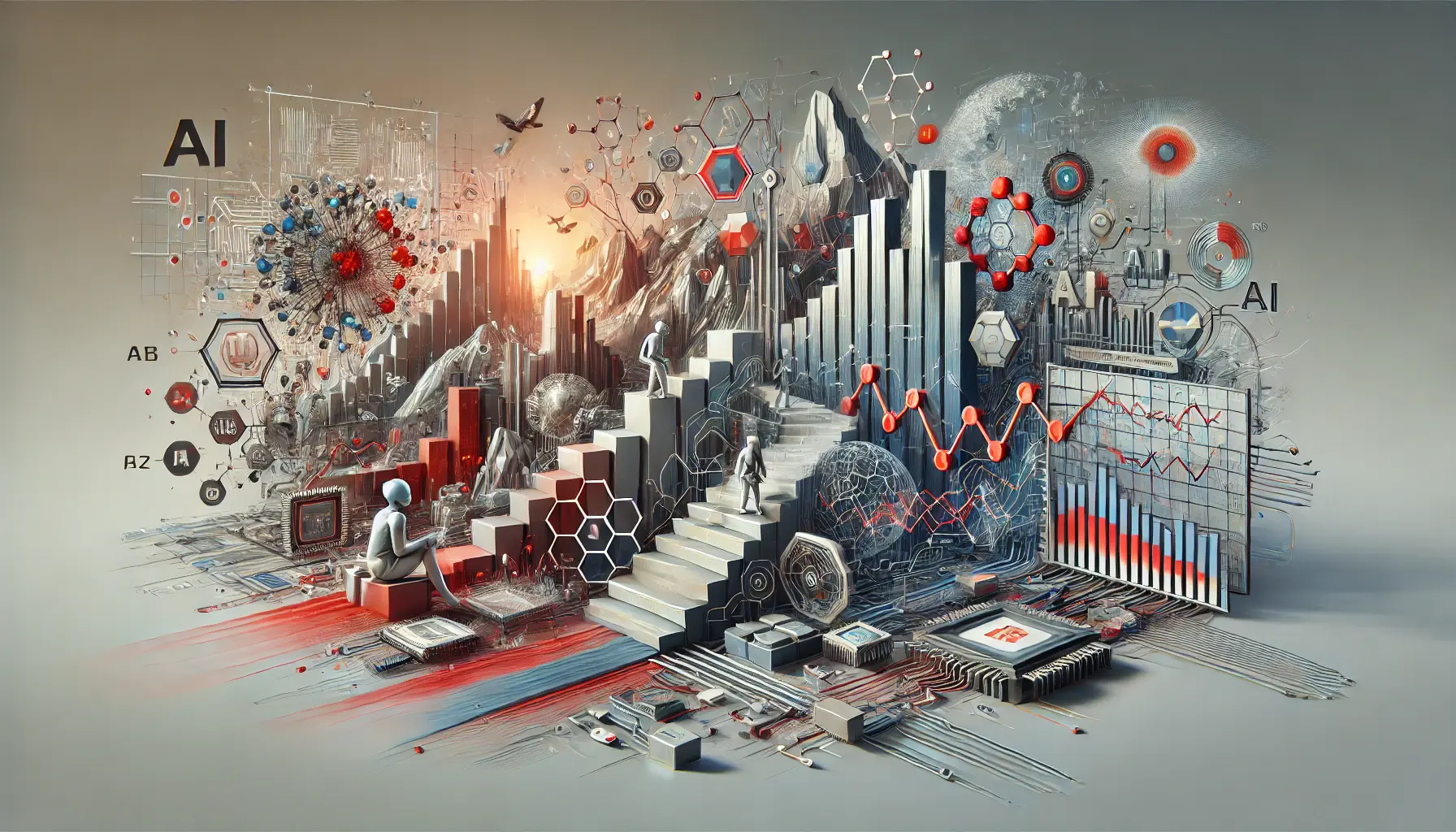
A depiction of navigating technological limitations in AI, highlighting challenges such as data quality and scalability issues.
Navigating Technological Limitations
Despite improvements, AI technologies have some limitations that may affect the effectiveness of advertising.
Some of the challenges include:
- Data Quality Issues: AI systems need high-quality data. Any inaccuracies or biases in the data may lead to incorrect conclusions.
- Interpretability Concerns: Complex AI models can act like ‘black boxes,’ making it hard to understand decision-making processes.
- Scalability Challenges: Implementing AI solutions at scale requires significant computational resources and infrastructure.
To overcome these limitations:
- Invest in Data Management: Make sure the data used to train the AI is accurate, representative, and up-to-date.
- Enhance Model Transparency: Build interpretable AI models that help provide insight into the reasoning behind their decisions.
- Scale Infrastructure Appropriately: Invest in infrastructure to a level where it can support AI operations at desired scales.
By addressing these challenges head-on, advertisers can gain from AI-driven targeting while upholding ethical standards and consumer trust.
Privacy and ethical considerations are critical in AI advertising. Implement transparency, minimize data collection, and conduct regular bias audits to ensure compliance and trust.
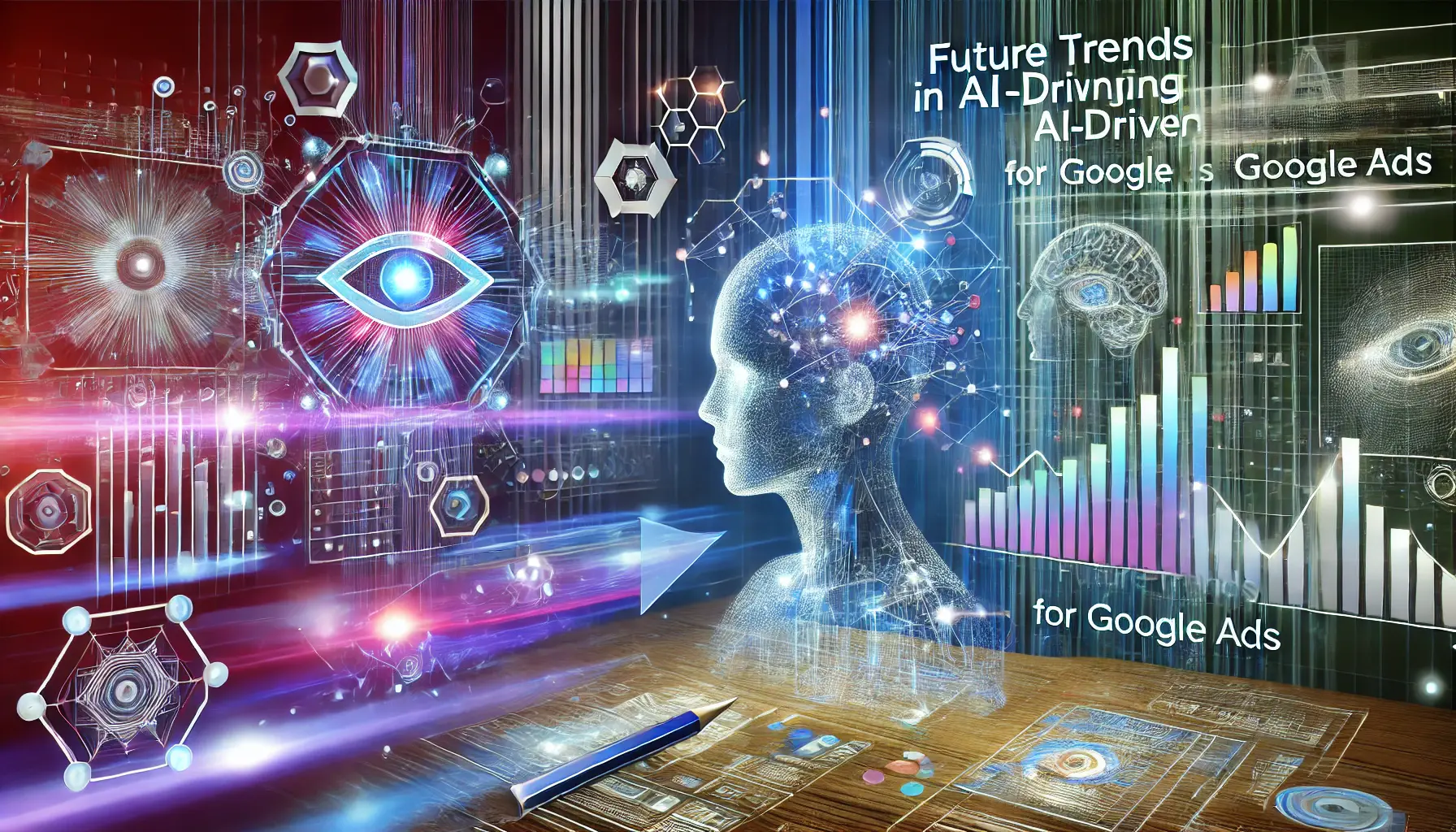
undefined
Future Trends in AI-Driven Targeting for Google Ads
With the continuous evolution of artificial intelligence, its integration into Google Ads is bound to revolutionize digital marketing strategies.
Understanding these emerging trends is key to sustaining a competitive advantage.
Let’s explore the future directions of AI-driven targeting in Google Ads.
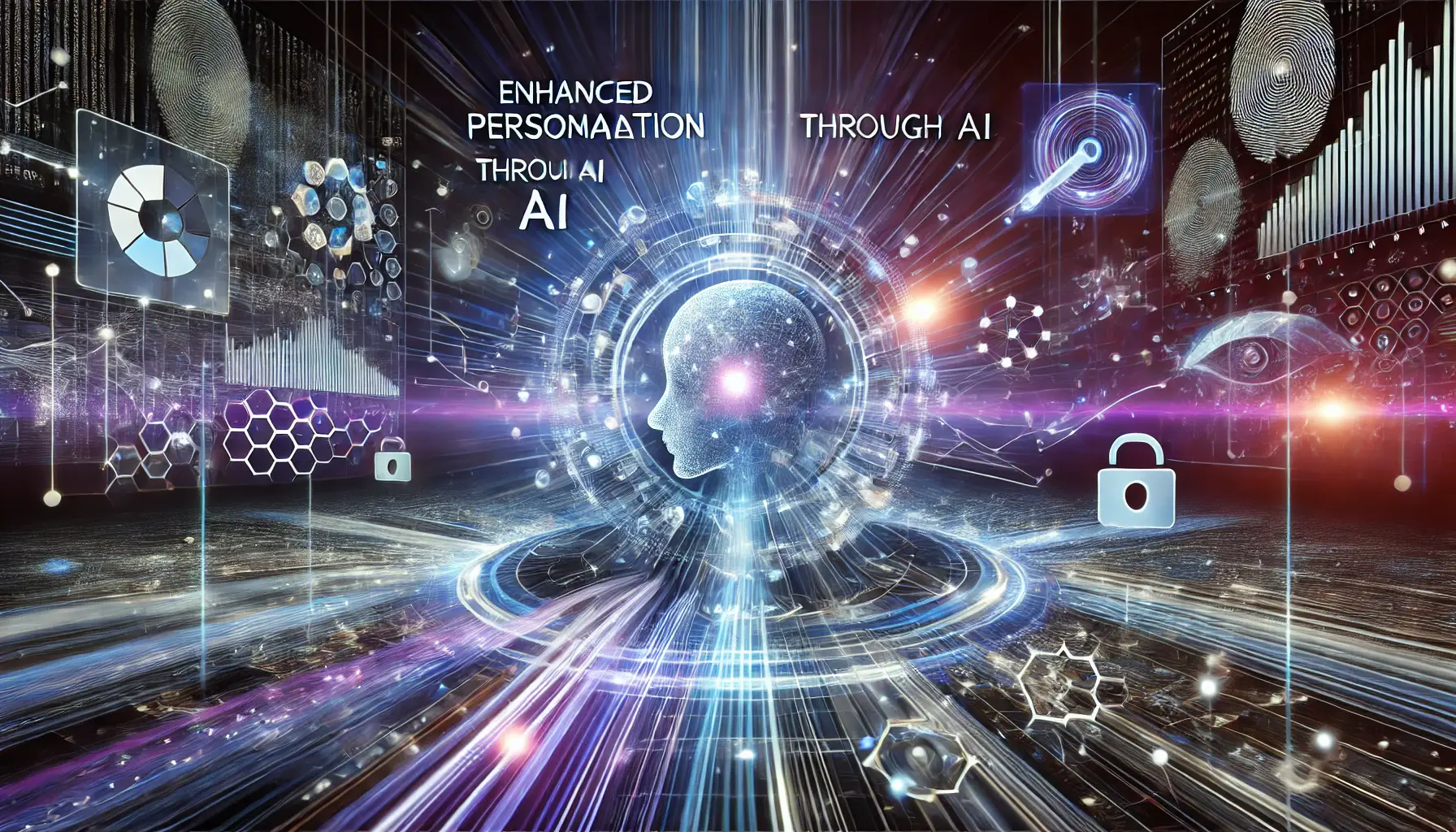
undefined
Enhanced Personalization Through AI
AI advancements are enabling unprecedented levels of ad personalization.
By analyzing user behavior, preferences, and demographics, AI can deliver highly tailored ads that resonate with individual users, increasing engagement and conversion rates.
This shift towards personalized advertising is expected to become more pronounced, with AI algorithms continually refining their targeting precision.
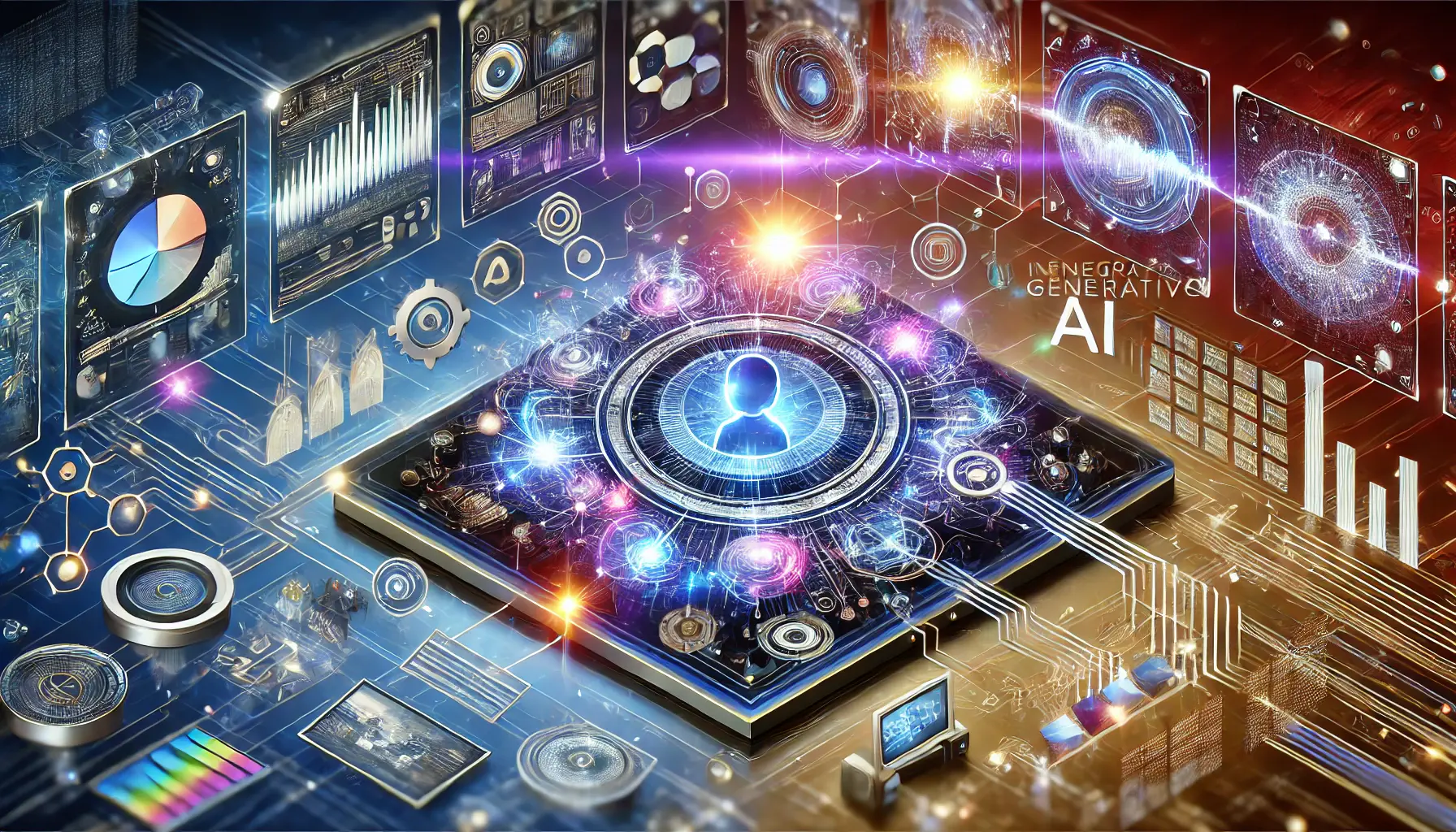
A depiction of generative AI’s role in ad creation, focusing on automated content production and creativity.
Integration of Generative AI in Ad Creation
Generative AI is revolutionizing ad content creation by producing compelling text, images, and videos.
Google’s integration of generative AI into its ad platforms allows for the automated generation of diverse ad creatives, facilitating more dynamic and engaging campaigns.
This innovation streamlines the creative process and enables rapid adaptation to market trends.
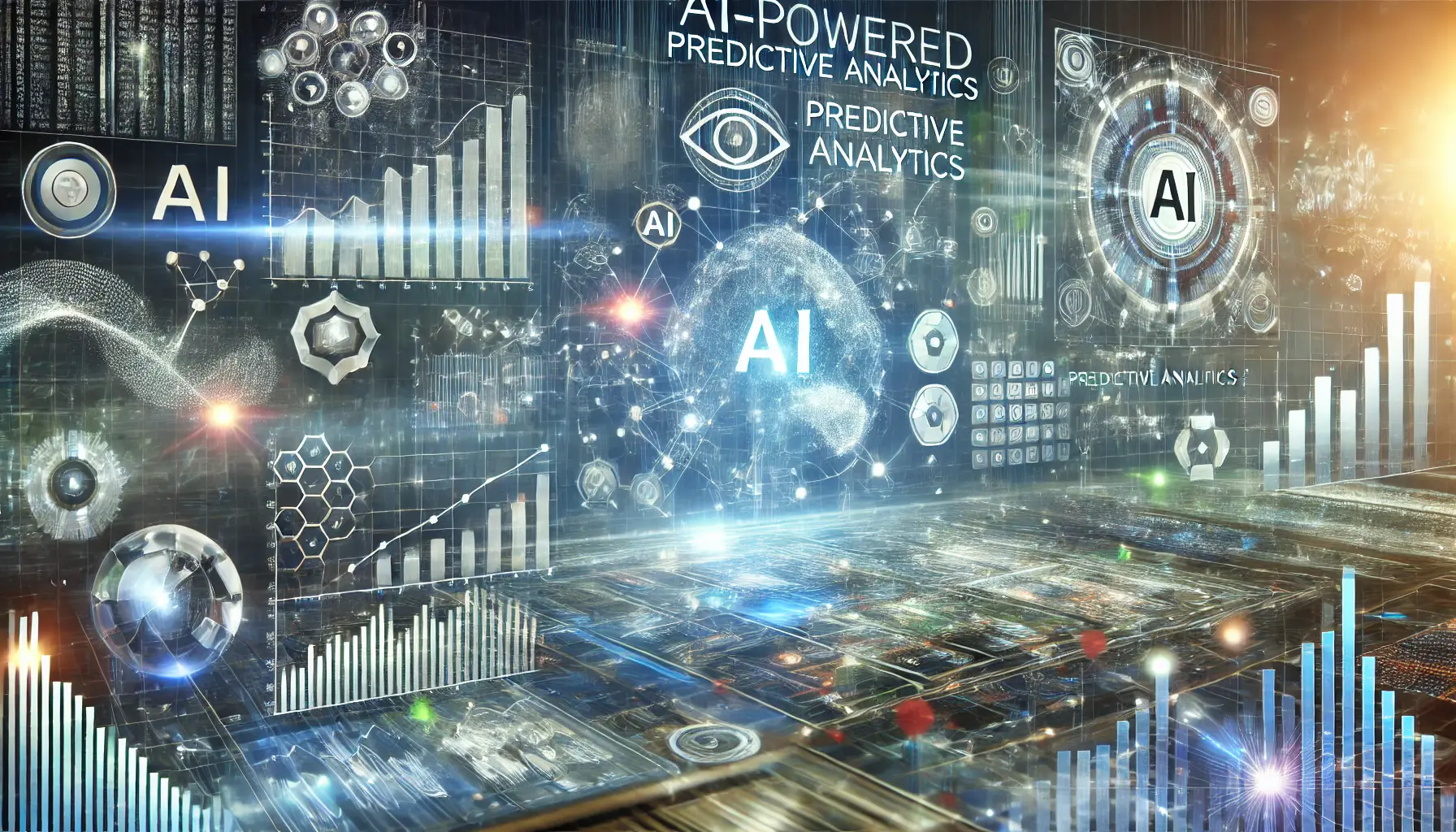
A depiction of AI-powered predictive analytics, showcasing data analysis and trend forecasting through AI algorithms.
AI-Powered Predictive Analytics
Predictive analytics, powered by AI, is becoming integral to campaign strategies.
By estimating user behavior and market trends, AI provides advertisers with the opportunity to make data-driven decisions, optimize ad spending, and meet customer needs.
This proactive approach increases the effectiveness of advertising efforts and maximizes return on investment.

A depiction of privacy-first advertising, emphasizing security, data protection, and ethical marketing practices.
Focus on Privacy-First Advertising
With growing concerns over data privacy, AI is facilitating privacy-first advertising solutions.
Techniques such as federated learningA machine learning technique that allows models to be trained across decentralized data sources while maintaining data privacy. allow AI models to learn from user data without compromising individual privacy.
This approach ensures compliance with regulations and maintains consumer trust while delivering relevant ads.
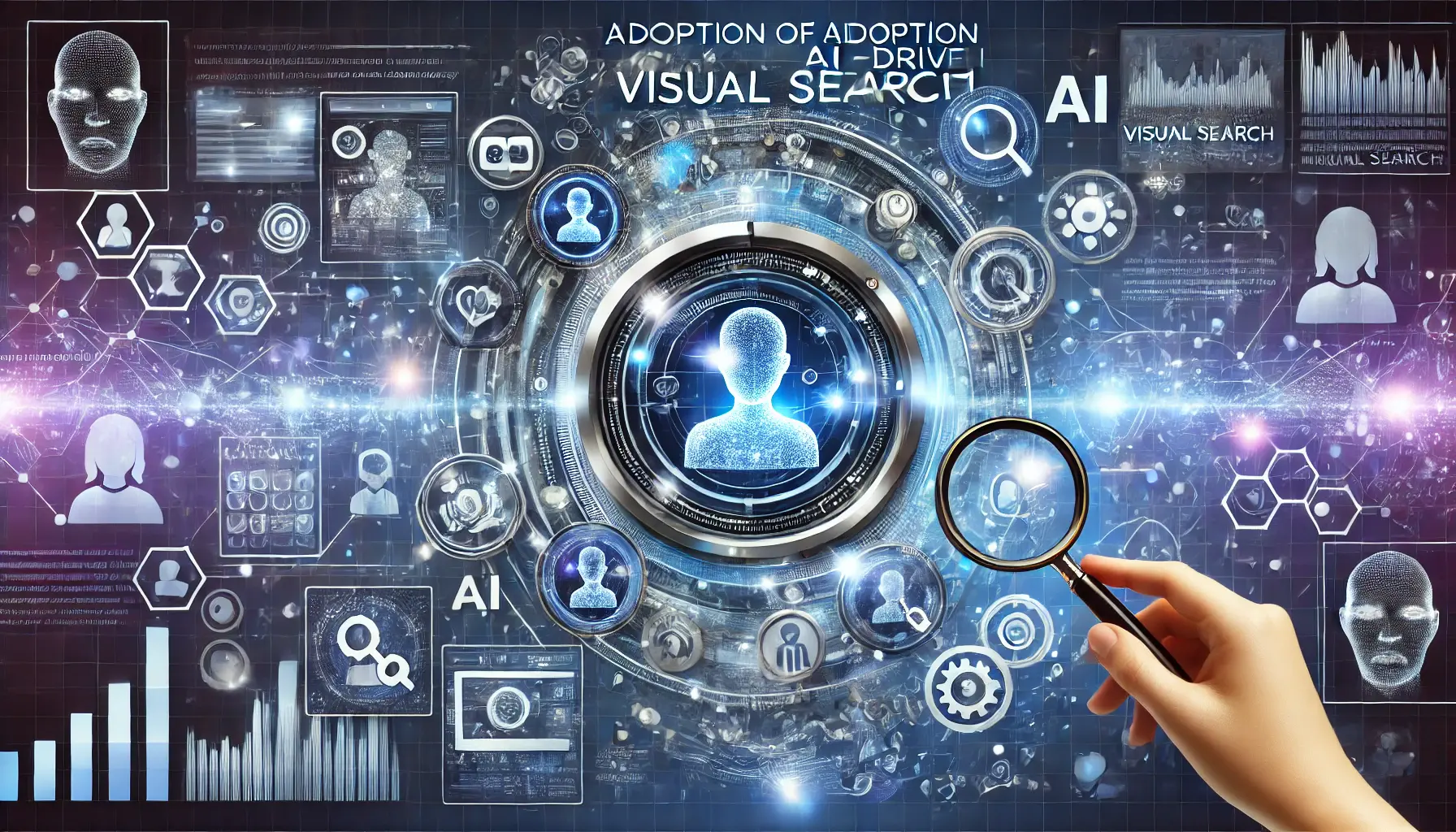
A visualization of AI-driven visual search technology, emphasizing image recognition and data analysis in digital content.
Adoption of AI-Driven Visual Search
Visual search, driven by AI, is transforming how users interact with ads.
Google’s AI capabilities enable users to search with images, making ads more interactive and engaging.
Brands can capitalize on this trend by optimizing their visual content to resonate with AI-driven search functionalities.
Embracing these AI-driven trends empowers advertisers to advance their Google Ads strategies, creating ads that are more personalized, effective, and ethical.
These developments are essential for businesses looking to fully utilize the potential of AI in digital marketing.
Emerging AI trends like generative content creation, predictive analytics, and privacy-first solutions are shaping the future of digital marketing strategies.
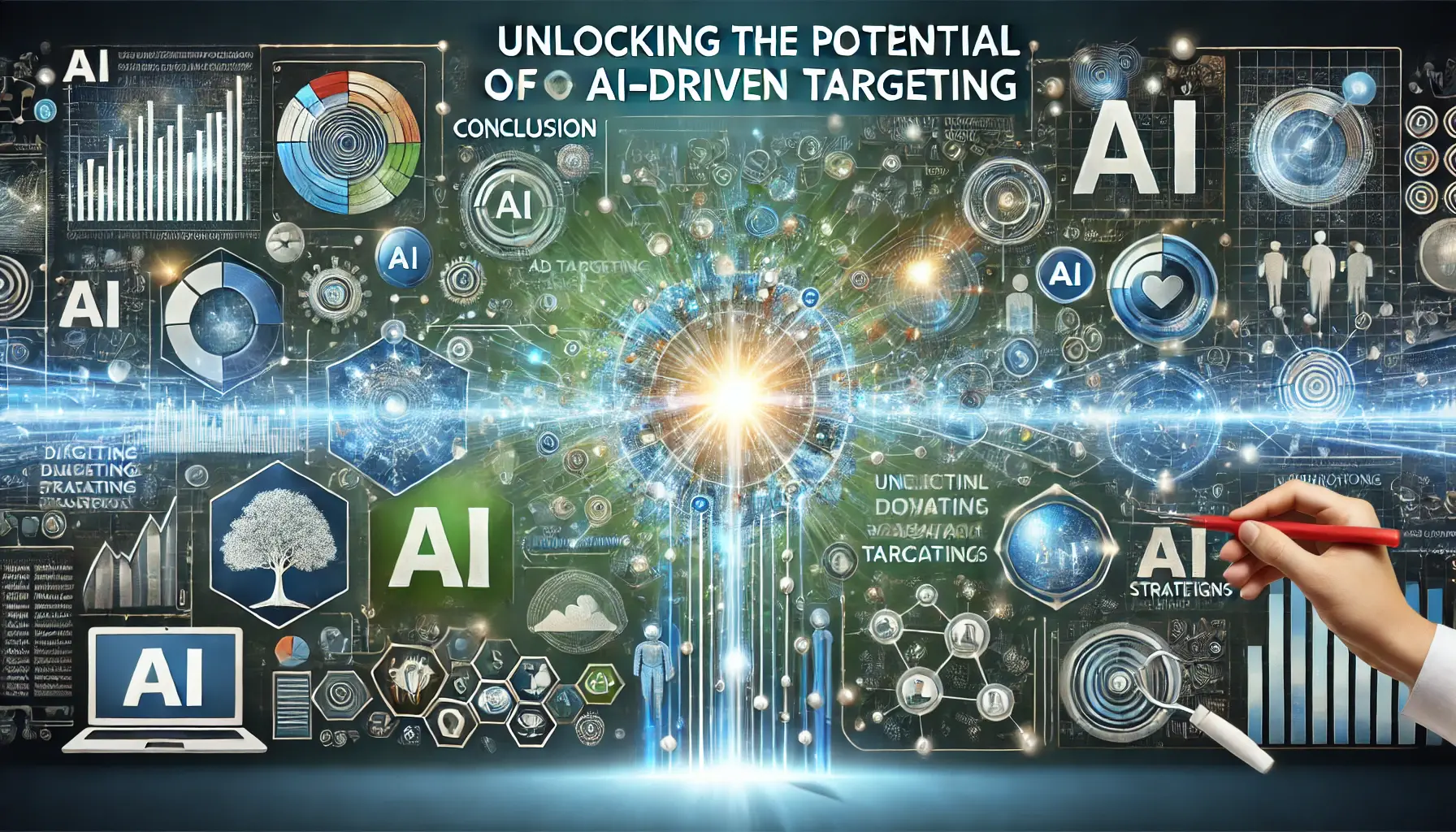
A depiction of the successful integration of AI-driven targeting in advertising, emphasizing optimized user targeting and campaign results.
Conclusion: Unlocking the Potential of AI-Driven Targeting
AI-driven targeting has revolutionized the way advertisers approach Google Ads campaigns, offering unparalleled opportunities for personalization, efficiency, and performance optimization.
This technology, while transformative, also presents unique challenges that require careful navigation.
By embracing its capabilities and addressing its limitations, advertisers can unlock its full potential and remain competitive in the ever-evolving digital marketing landscape.
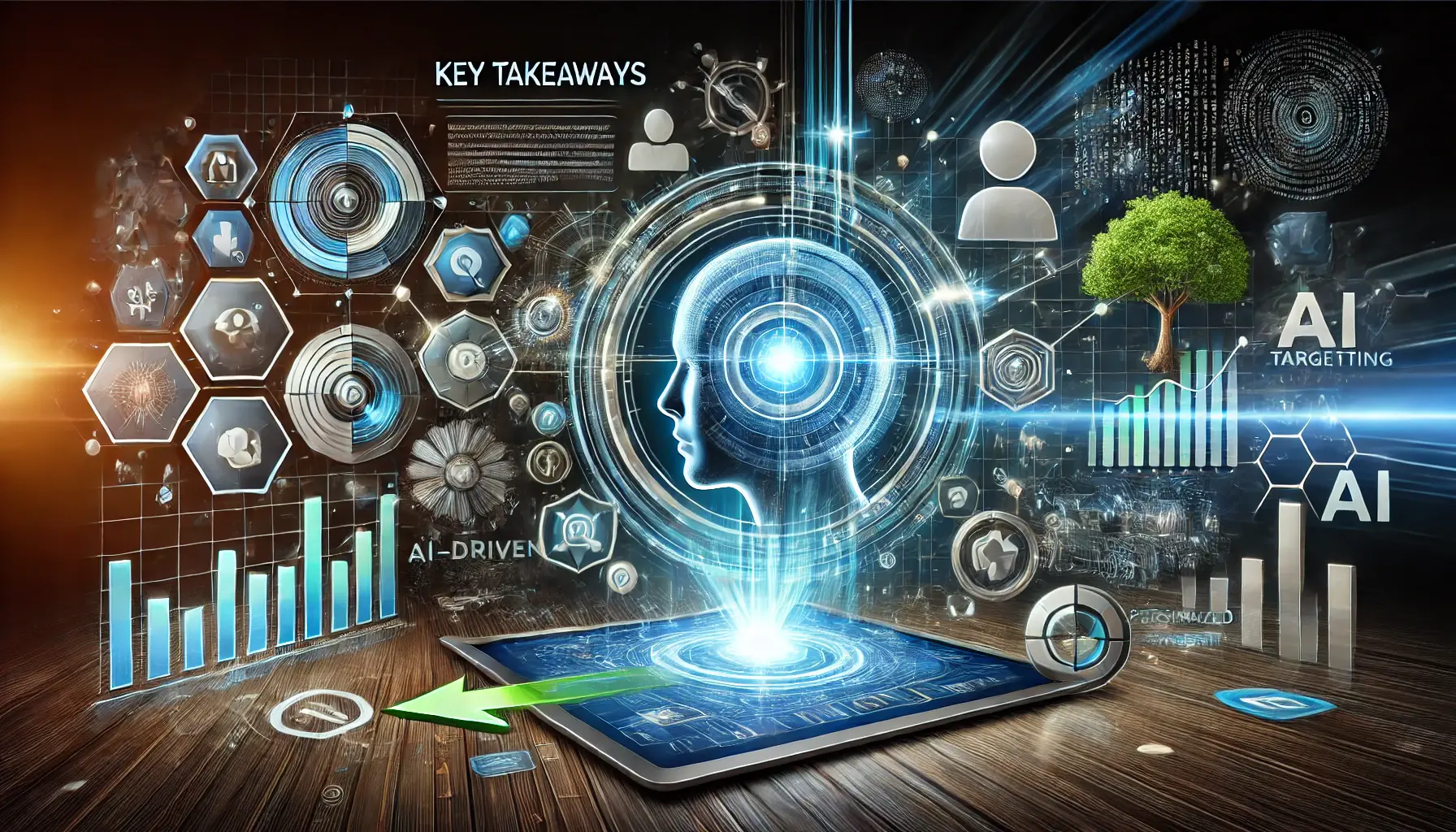
A depiction of the core benefits and insights of AI-driven targeting, with data streams, user profiles, and AI precision.
Key Takeaways on AI-Driven Targeting
Throughout this article, we have explored how AI-driven targeting reshapes digital advertising.
Here are the critical insights to remember:
- Enhanced Personalization: AI allows for personalized ads that resonate with particular audiences, increasing engagement and conversions.
- Streamlined Processes: Automation and predictive analytics make campaign management more straightforward, freeing up time for strategy and creativity.
- Privacy and Ethics: Addressing privacy concerns and ensuring ethical AI usage are paramount to maintaining consumer trust and regulatory compliance.
- Future Trends: Generative AI, predictive analytics, and privacy-first advertising are shaping the next wave of digital marketing innovations.
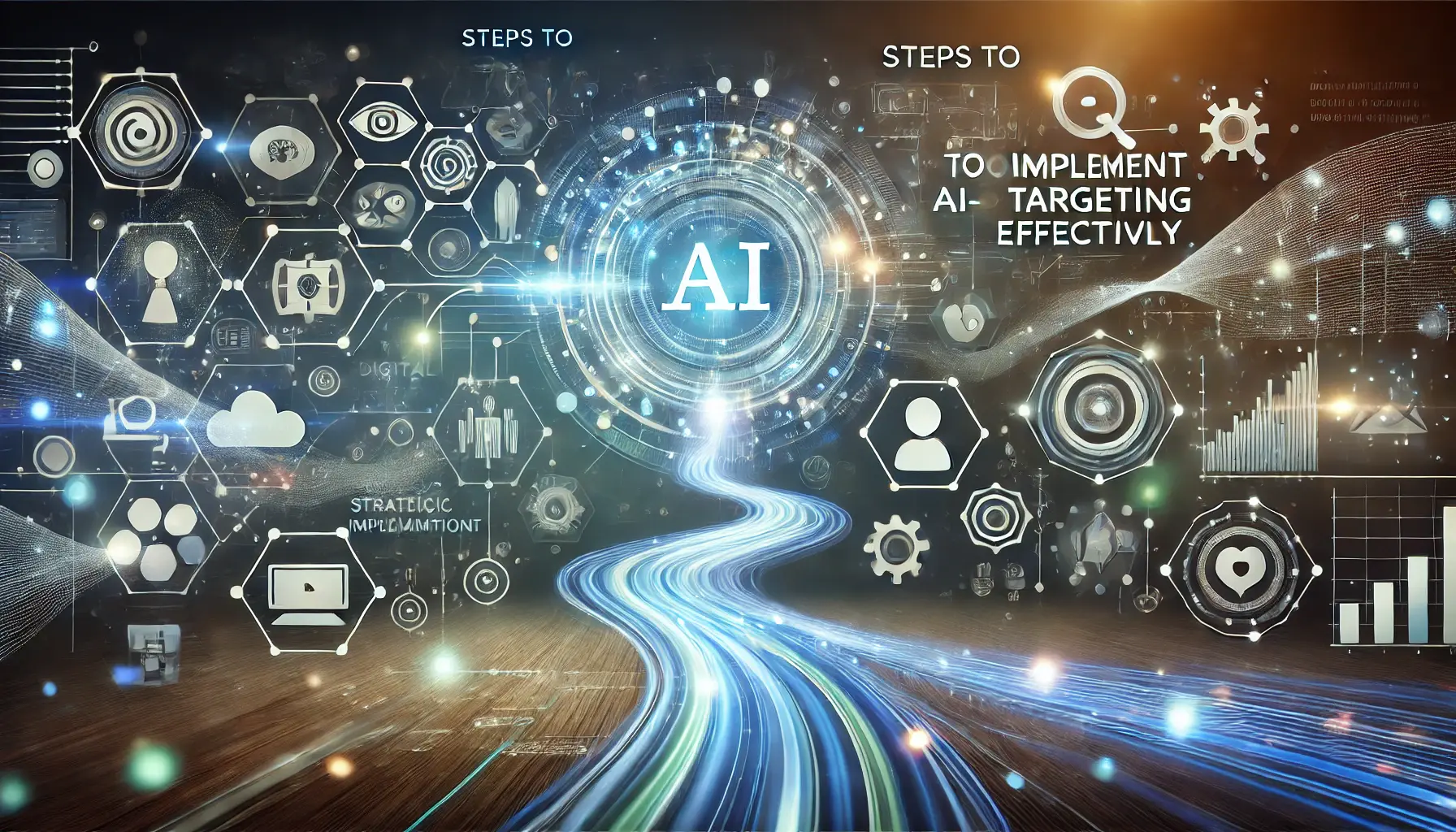
A depiction of the steps to implement AI-driven targeting effectively, showcasing the process from strategy to optimized ad targeting.
Steps to Implement AI-Driven Targeting Effectively
For advertisers looking to harness the power of AI-driven targeting in Google Ads, following these steps can set you on the path to success:
- Leverage AI-powered tools such as Smart Bidding and Performance Max campaigns to optimize ad spend and target the right audience.
- Utilize advanced analytics platforms to track campaign performance and refine strategies based on data-driven insights.
- Invest in high-quality data and ensure its accuracy to enhance AI model performance.
- Adopt privacy-preserving technologies and adhere to ethical guidelines to safeguard user trust.
- Stay informed about emerging trends and adapt your strategies to incorporate the latest AI innovations.

A depiction of the limitless potential of AI in advertising, symbolizing innovation and forward-looking progress.
Looking Ahead
The integration of AI-driven targeting in Google Ads is much more than a passing trend; it is a core shift in how digital marketing is conducted.
Advertisers embracing this technology can look forward not only to better performance but also to deeper and more meaningful relationships with their audiences.
As AI continues to evolve, staying proactive and adaptive will be key to leveraging its transformative potential.
By understanding and acting on the strategies outlined, you can set your campaigns up for success in an AI-driven future and distinguish yourself in a competitive digital landscape.
Embrace AI-driven targeting to enhance personalization, streamline processes, and boost ROI in Google Ads campaigns while addressing ethical challenges.
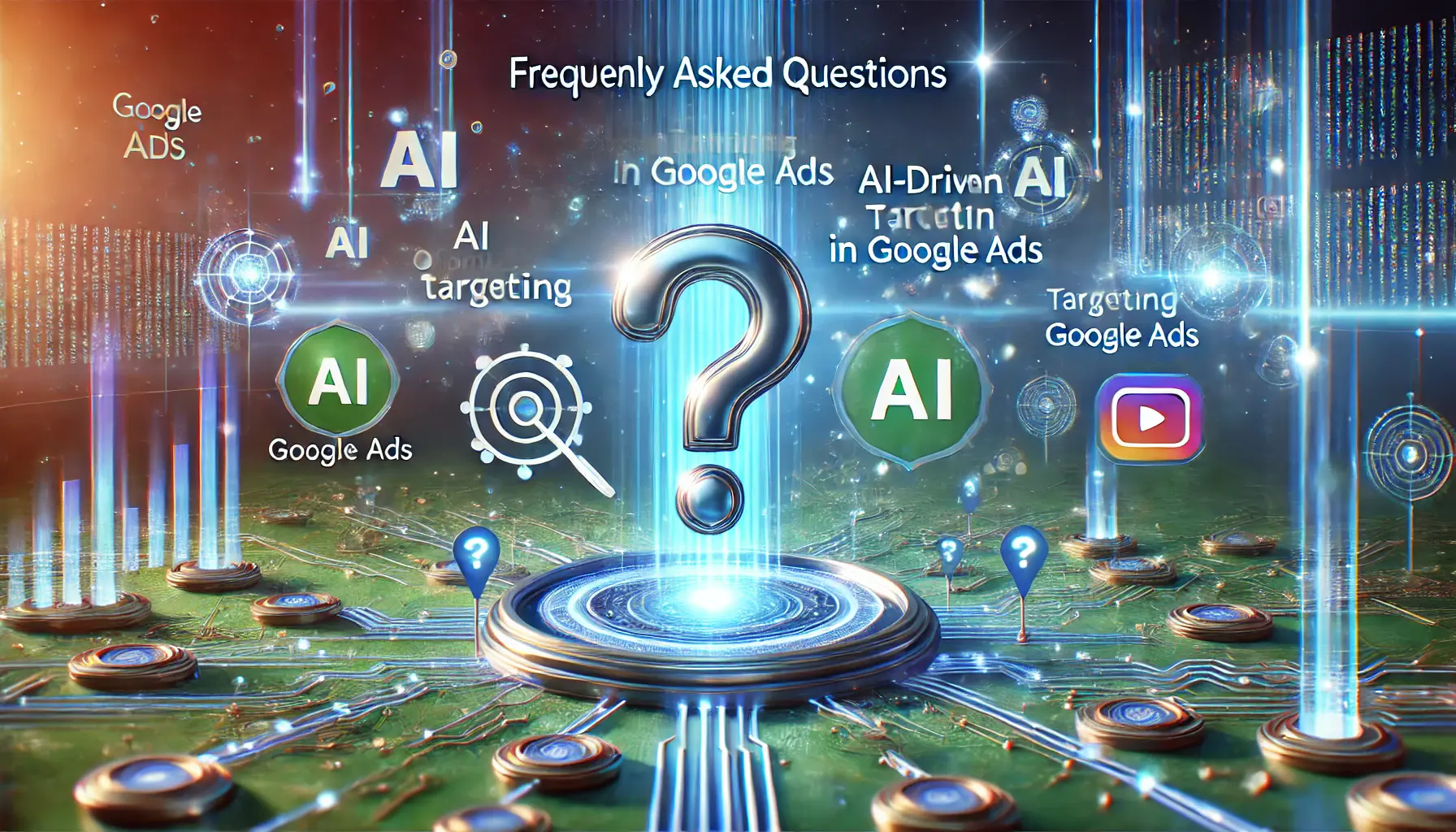
A depiction of AI-driven targeting in Google Ads, illustrating how AI answers frequently asked questions and optimizes ad targeting.
Your campaigns can be managed by an agency specialized in Google Ads, check out our service page.
Frequently Asked Questions about AI-Driven Targeting in Google Ads
As AI-driven targeting becomes integral to digital marketing, advertisers often have questions about its implementation and benefits.
Here are some common inquiries:
AI-driven targeting utilizes artificial intelligence to analyze user data, enabling advertisers to deliver personalized ads to specific audiences, thereby enhancing engagement and conversion rates.
AI processes vast datasets to identify patterns in user behavior, allowing for precise audience segmentation and real-time optimization of ad campaigns.
Integrating AI in Google Ads leads to improved targeting accuracy, increased efficiency through automation, and enhanced personalization, resulting in higher return on investment.
Yes, AI-driven targeting involves extensive data collection, raising privacy concerns.
Advertisers must ensure compliance with data protection regulations and adopt privacy-preserving technologies.
Utilize Google’s AI-powered tools like Smart Bidding and Performance Max campaigns to automate bidding strategies and optimize ad placements effectively.
Challenges include addressing privacy issues, ensuring ethical use of AI, and navigating technological limitations such as data quality and model interpretability.
AI enhances analytics by providing deeper insights into key metrics like click-through rates and conversion rates, enabling data-driven decision-making for campaign optimization.
Emerging trends include enhanced personalization, integration of generative AI in ad creation, AI-powered predictive analytics, and a focus on privacy-first advertising solutions.
While beneficial for many, the suitability of AI-driven targeting depends on factors like business size, target audience, and available resources.
It’s essential to assess alignment with specific marketing goals.
